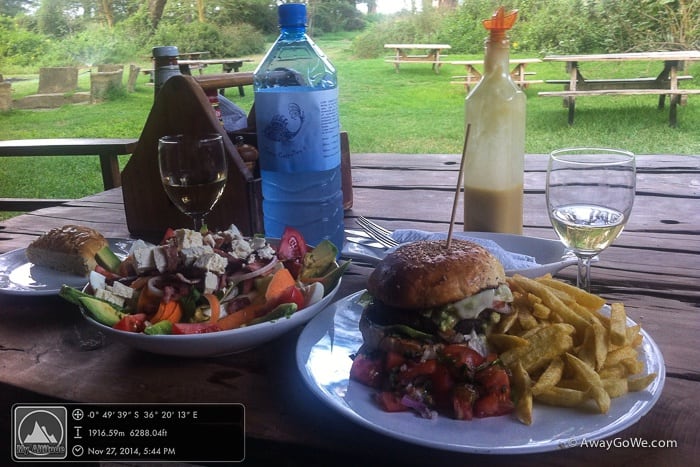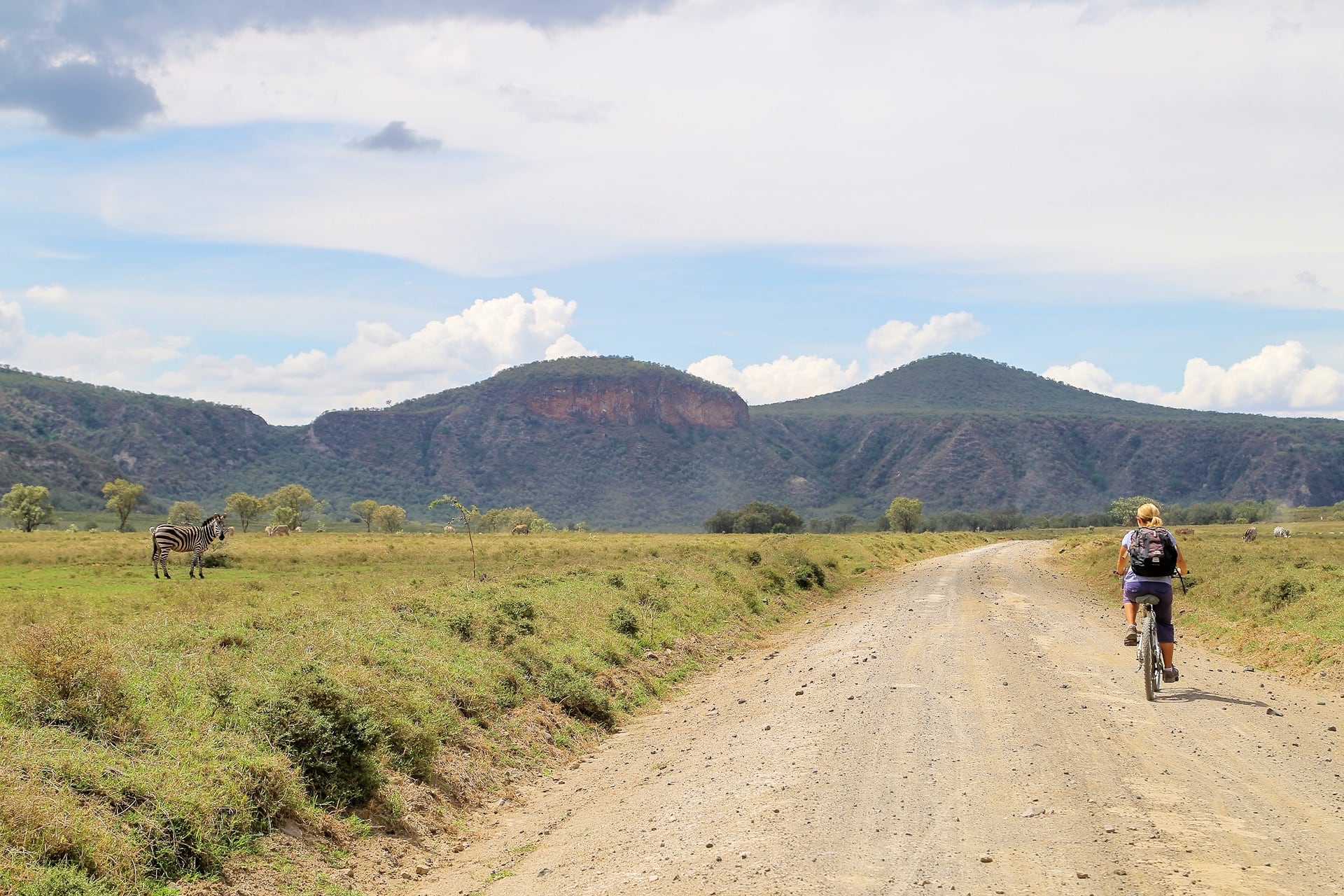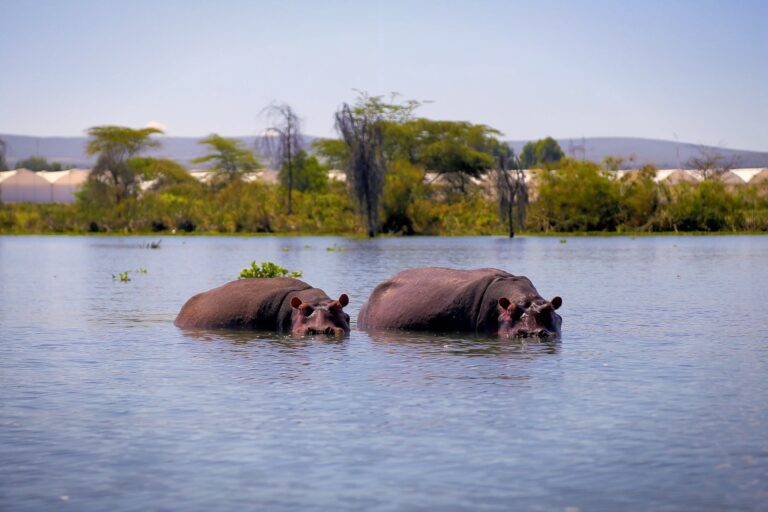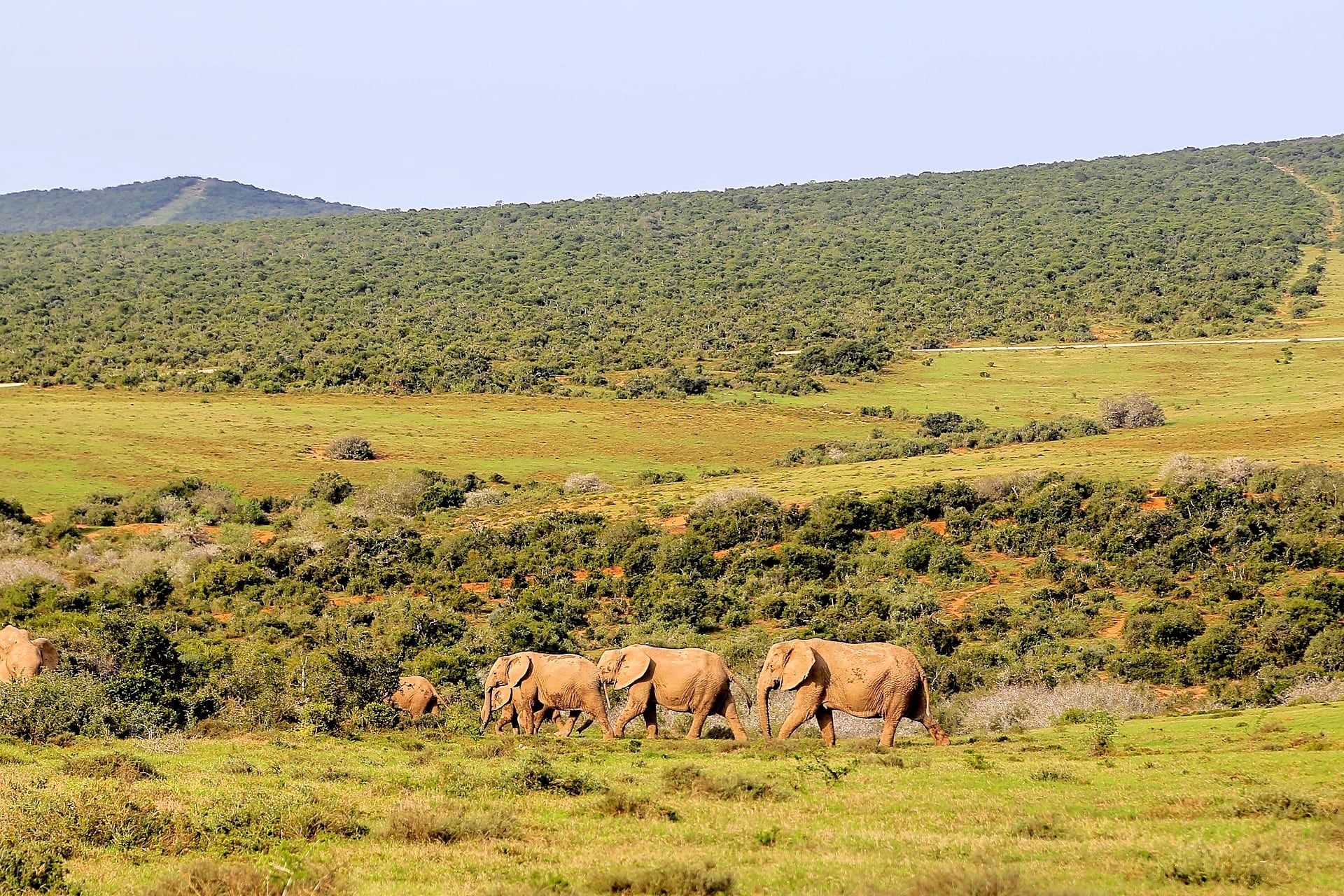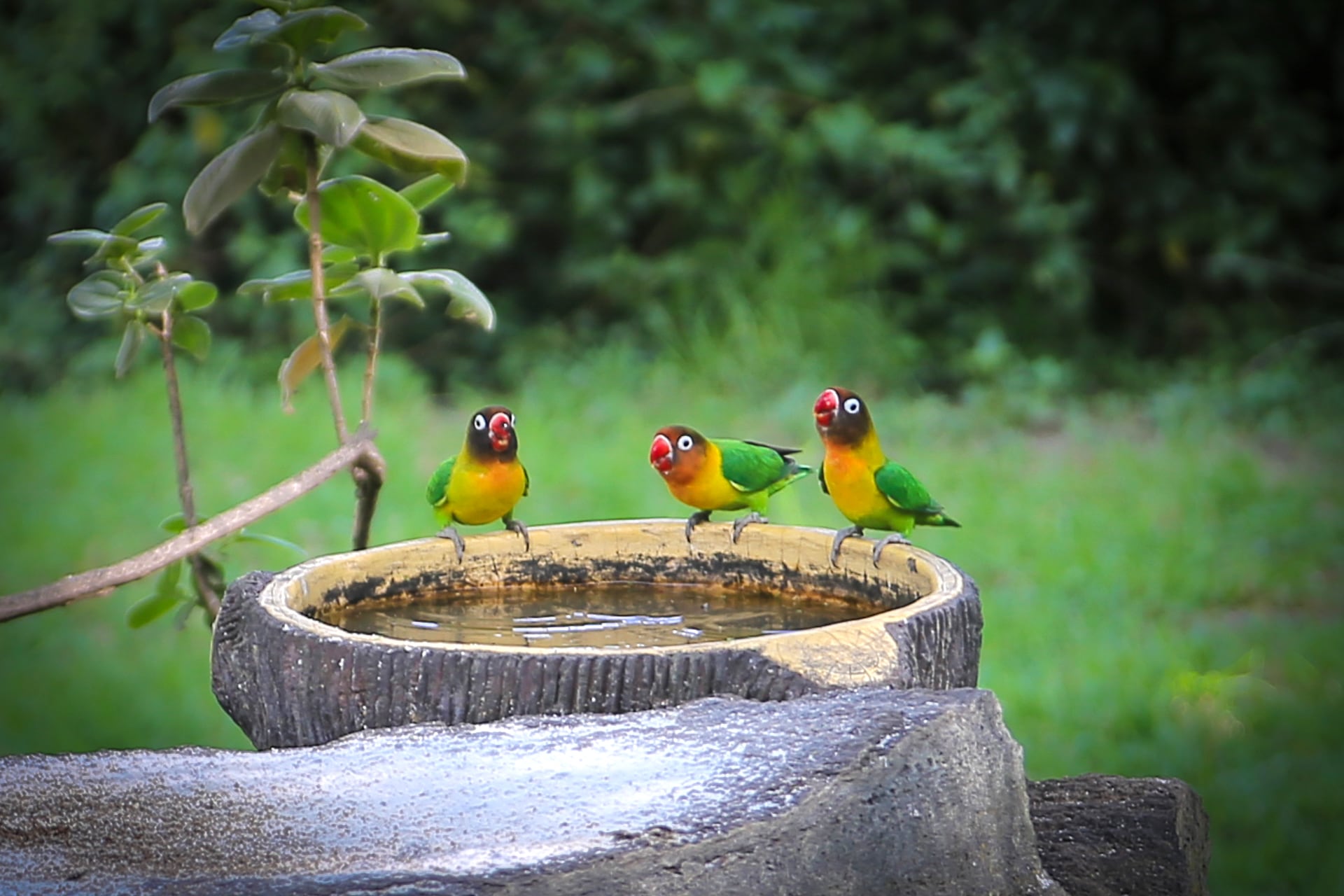Hell’s Gate National Park near Lake Naivasha in Kenya is well-known for its location in the Rift Valley, proximity to Nairobi, and dramatic and perilous gorge.
It’s also a fantastic place to spot rare native wildlife including most of the Big Five – and best of all, it can all be done by bike!
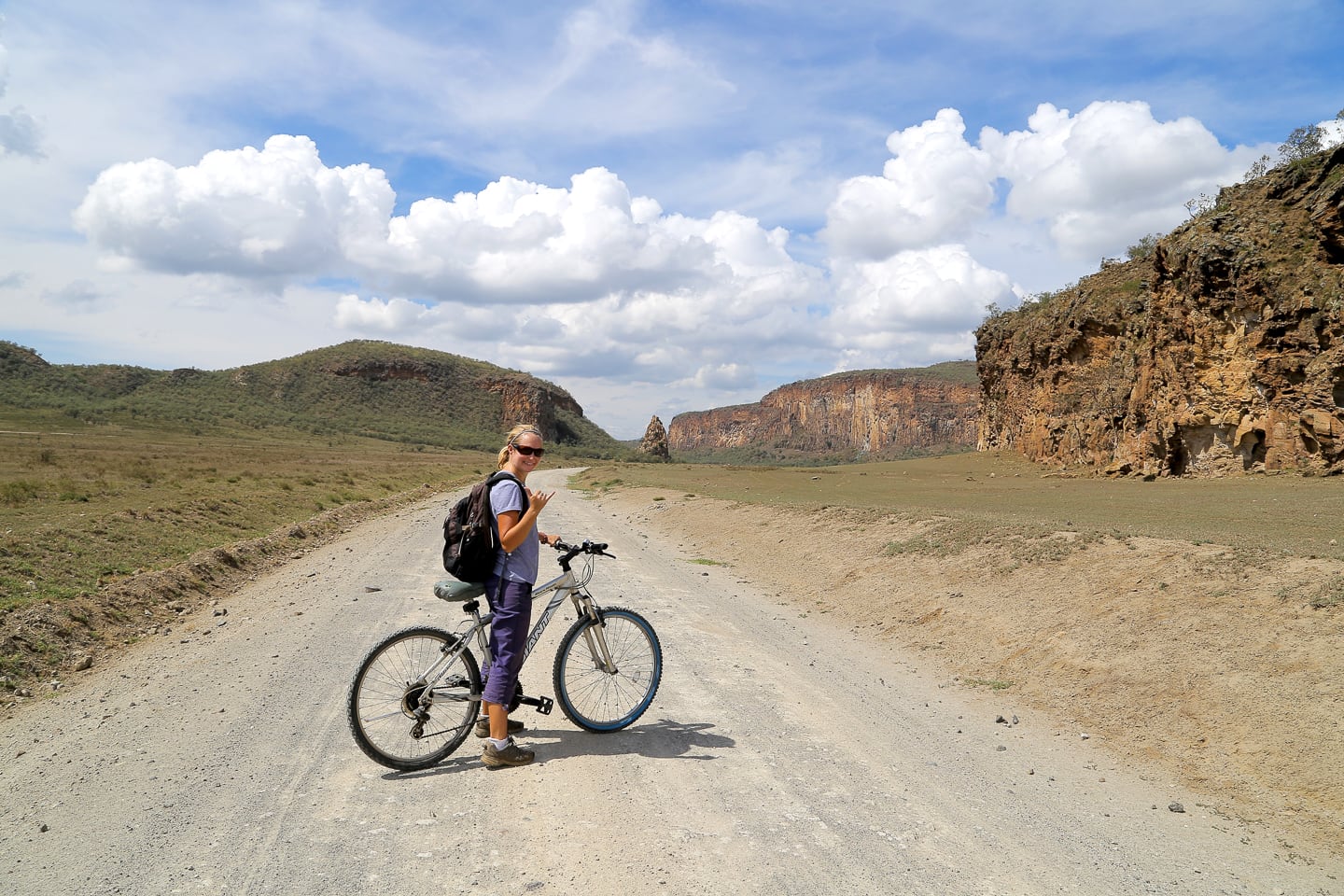
Biking Hells Gate National Park
When Lori first told me that there was a National Park in Kenya that you could RIDE YOUR BIKE THROUGH, I was sold.
Never mind the fact that Hells Gate National Park is also home to numerous free-roaming baboons, jackals, hyena, African buffalo, zebra, leopards, and even lion — there was no turning back.
Man, I love this country.
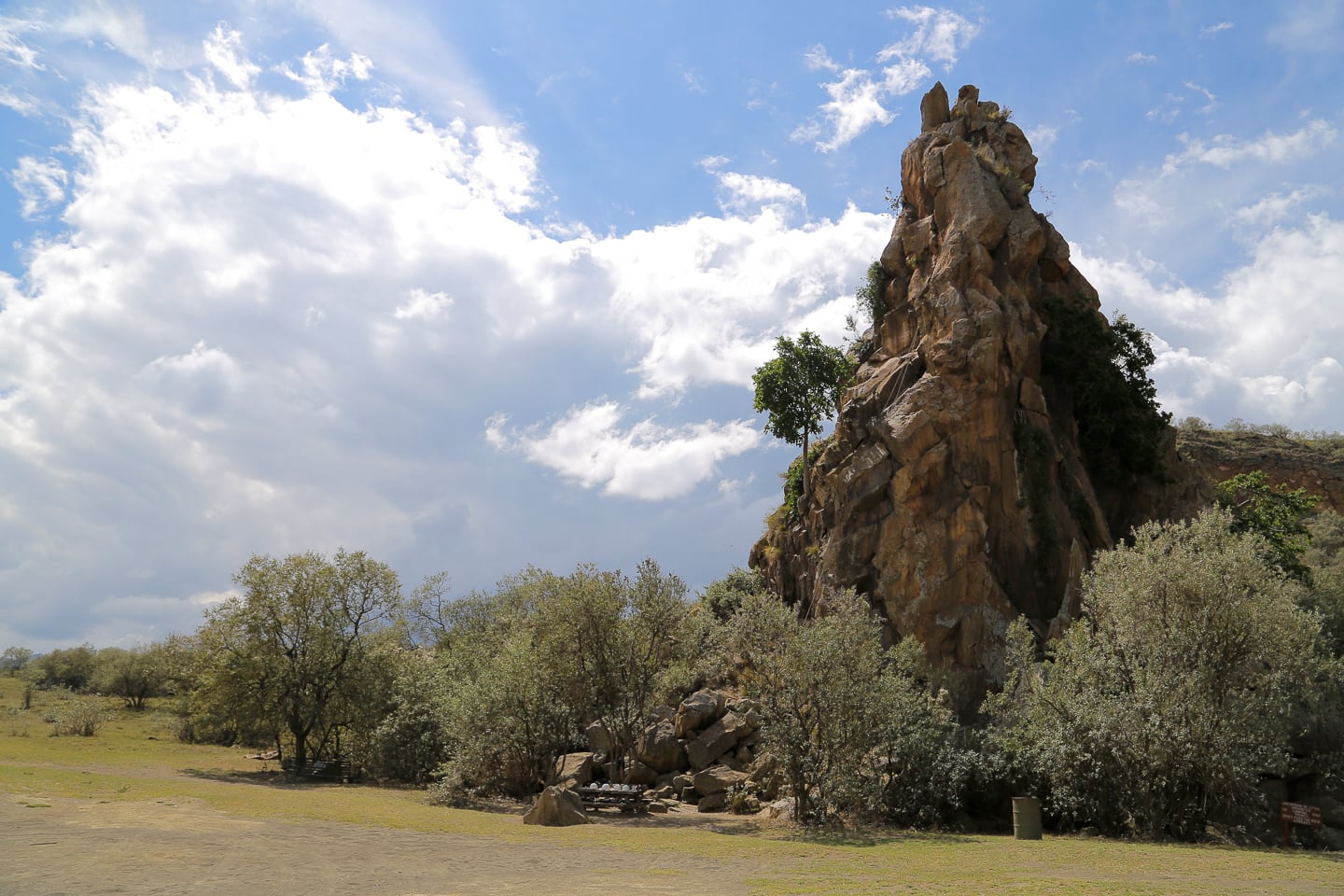
The 75-foot Fischer’s Tower (above) welcomes bicyclists as you enter the park.
It took us about 30 minutes to ride the 6 km (~4 miles) of mostly gravel road from Camp Carnelley on Lake Naivasha to this point, via Elsa Gate (the Main Gate). Despite being fairly warm and dusty, it was a pleasant ride.
There are bike rental “shops” where the road to the park meets the main road, but we opted to rent our bikes from Camp Carnelley’s so that we wouldn’t have to walk to the turnoff and because we had been told by other travelers that their bikes were generally better — and in our case, they were.
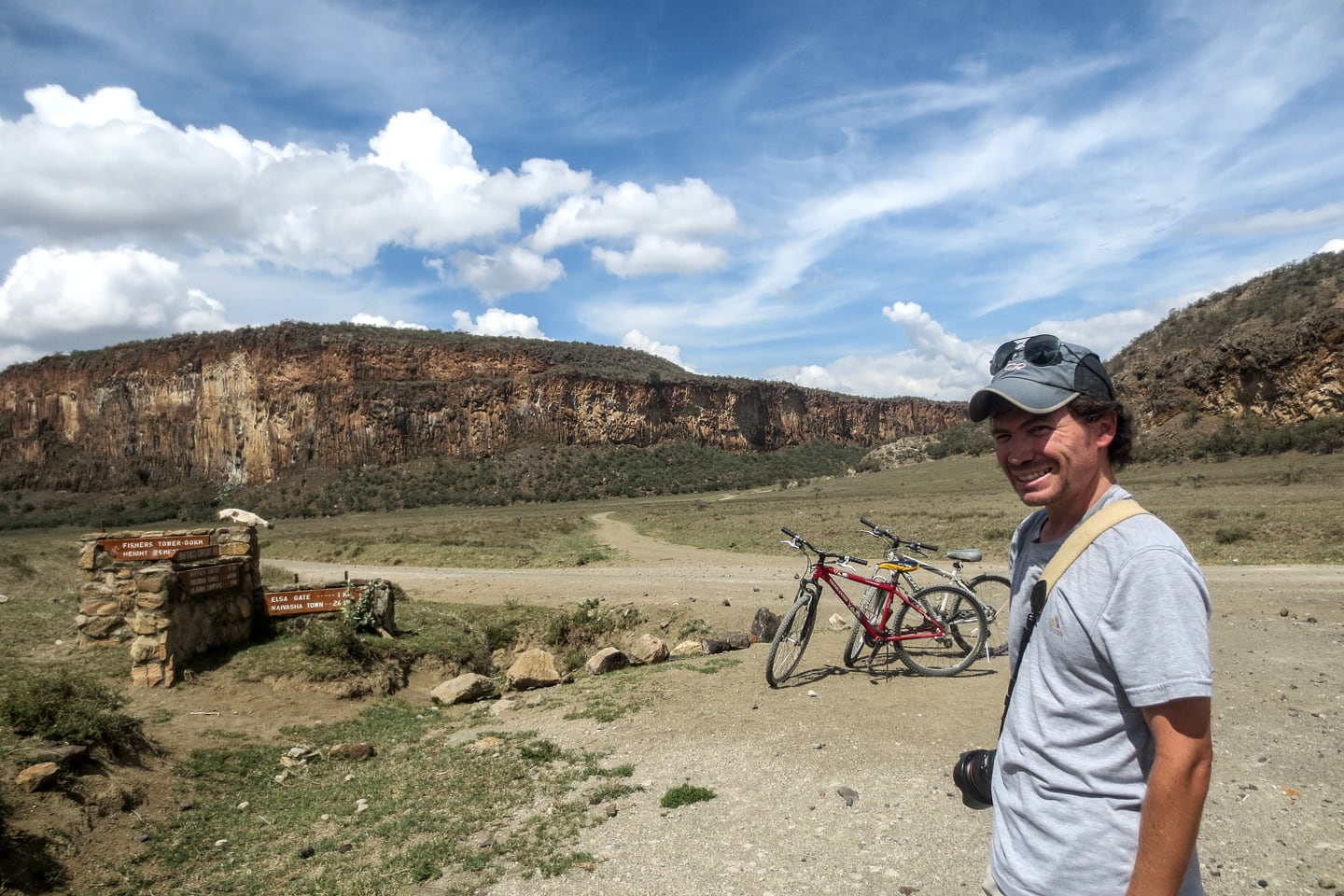
Fortunately, there aren’t too many hills in the park, with the very obvious exception of the long, gradual incline on the way back–you are descending into a gorge, after all–but we’ll get to that.
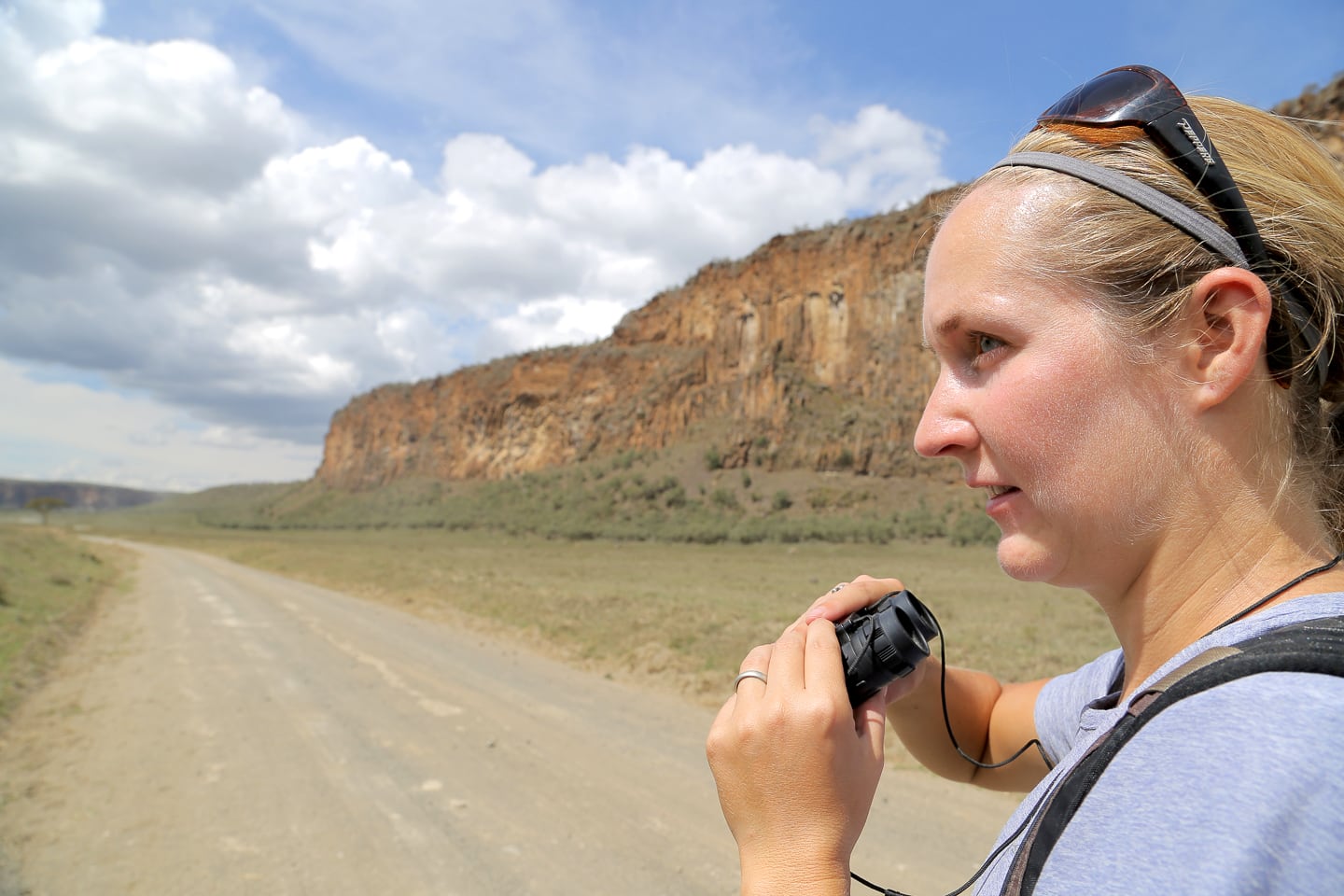
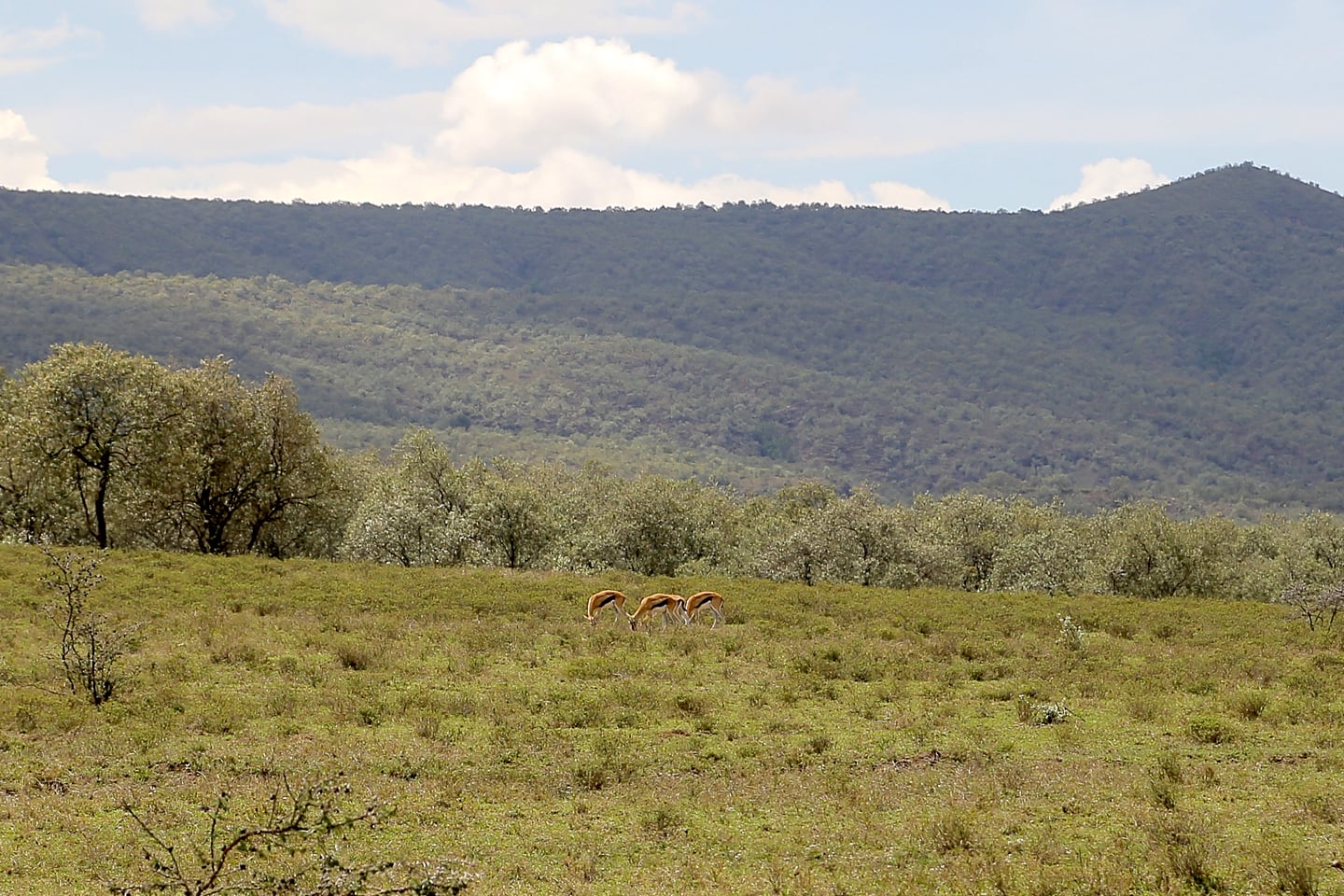
While most of the residents of Hells Gate aren’t that unique from what we saw at Addo (minus the elephants, of course), it is a truly unique and humbling experience to be able to ride through the park free from the trappings of steel and glass.

The one thing Lori really wanted to see in the wild that she hadn’t was a giraffe. We did indeed manage to catch a fleeting glimpse of one far off in the distance—far from the multitudes I had encountered in Murchison years before.
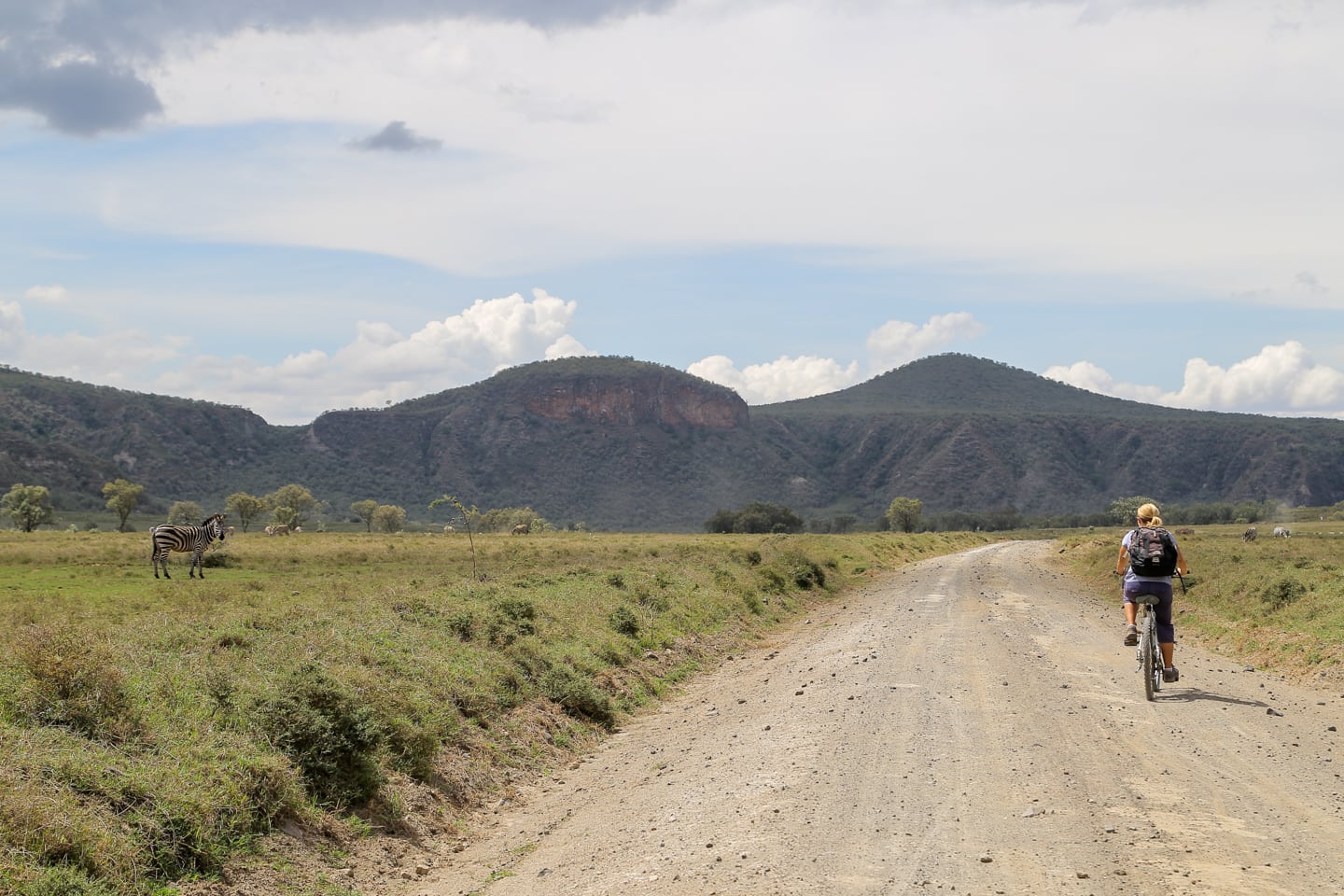
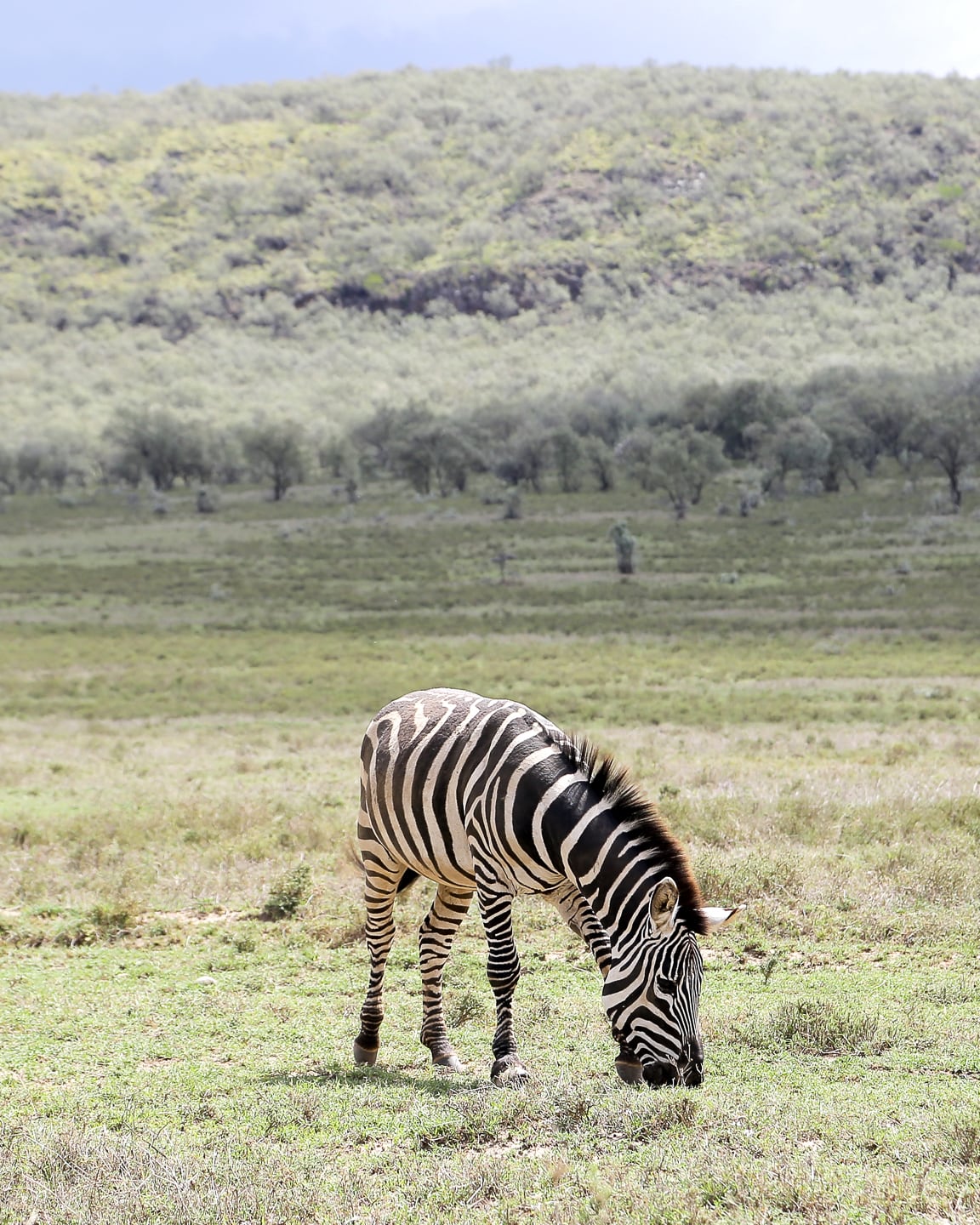
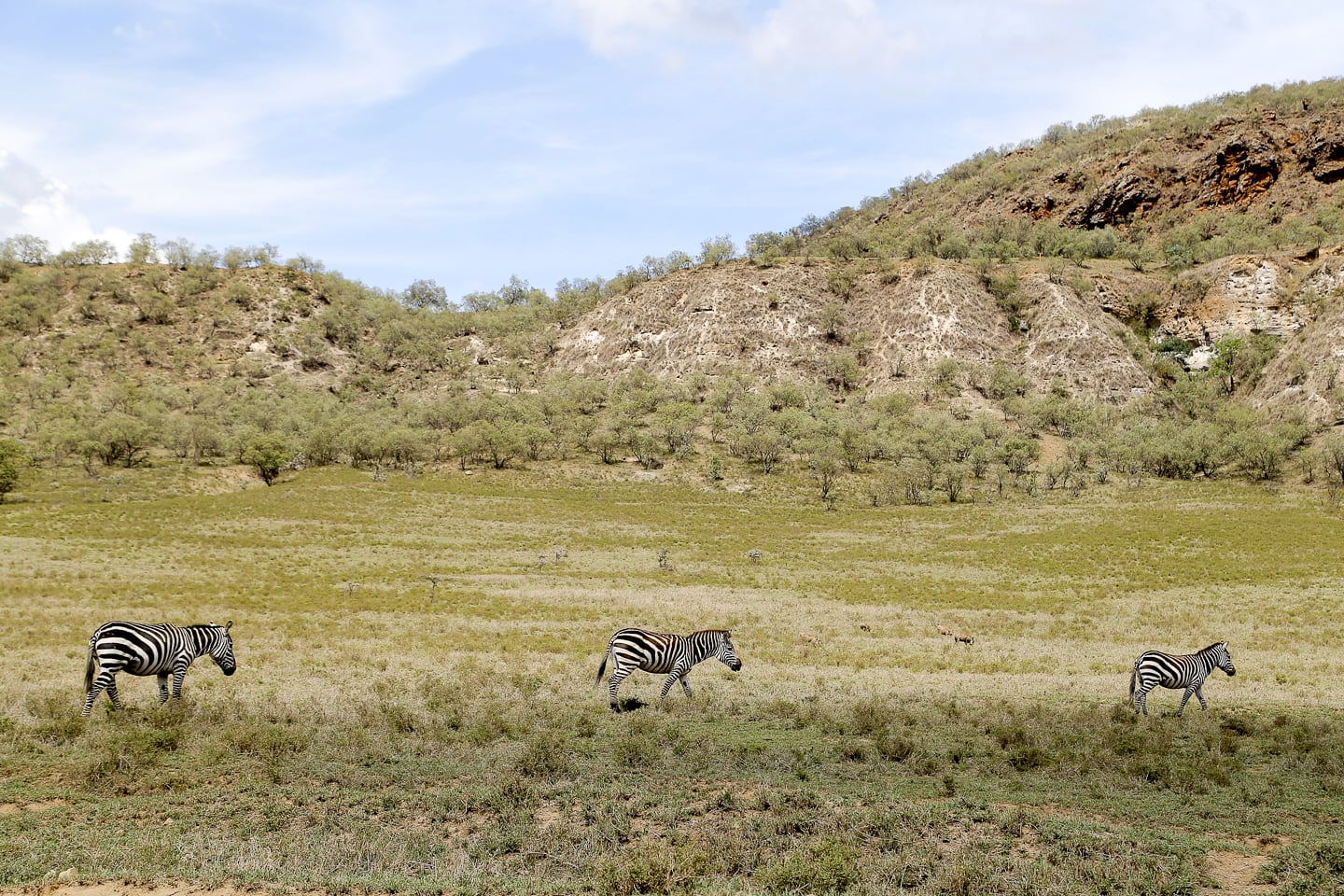
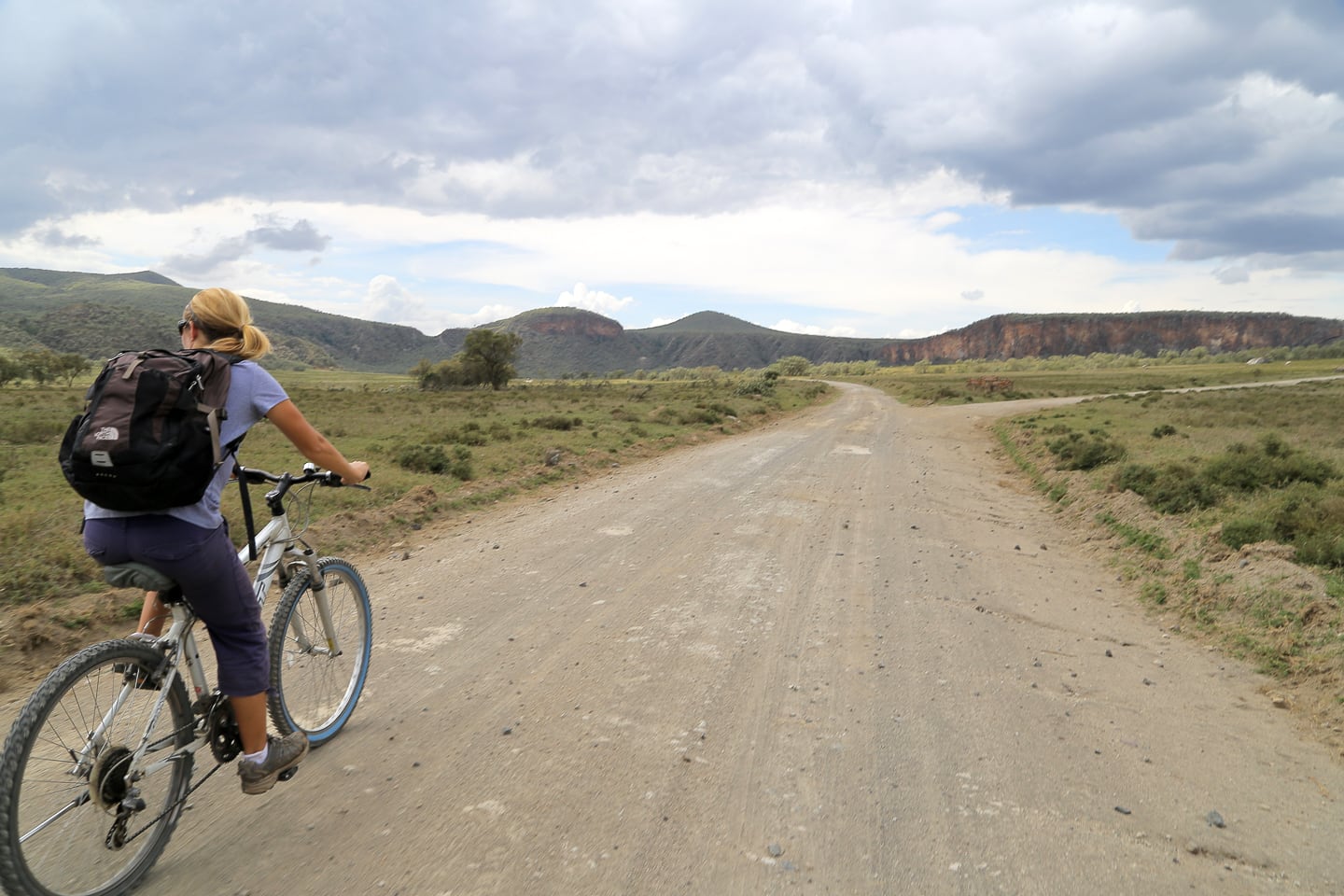
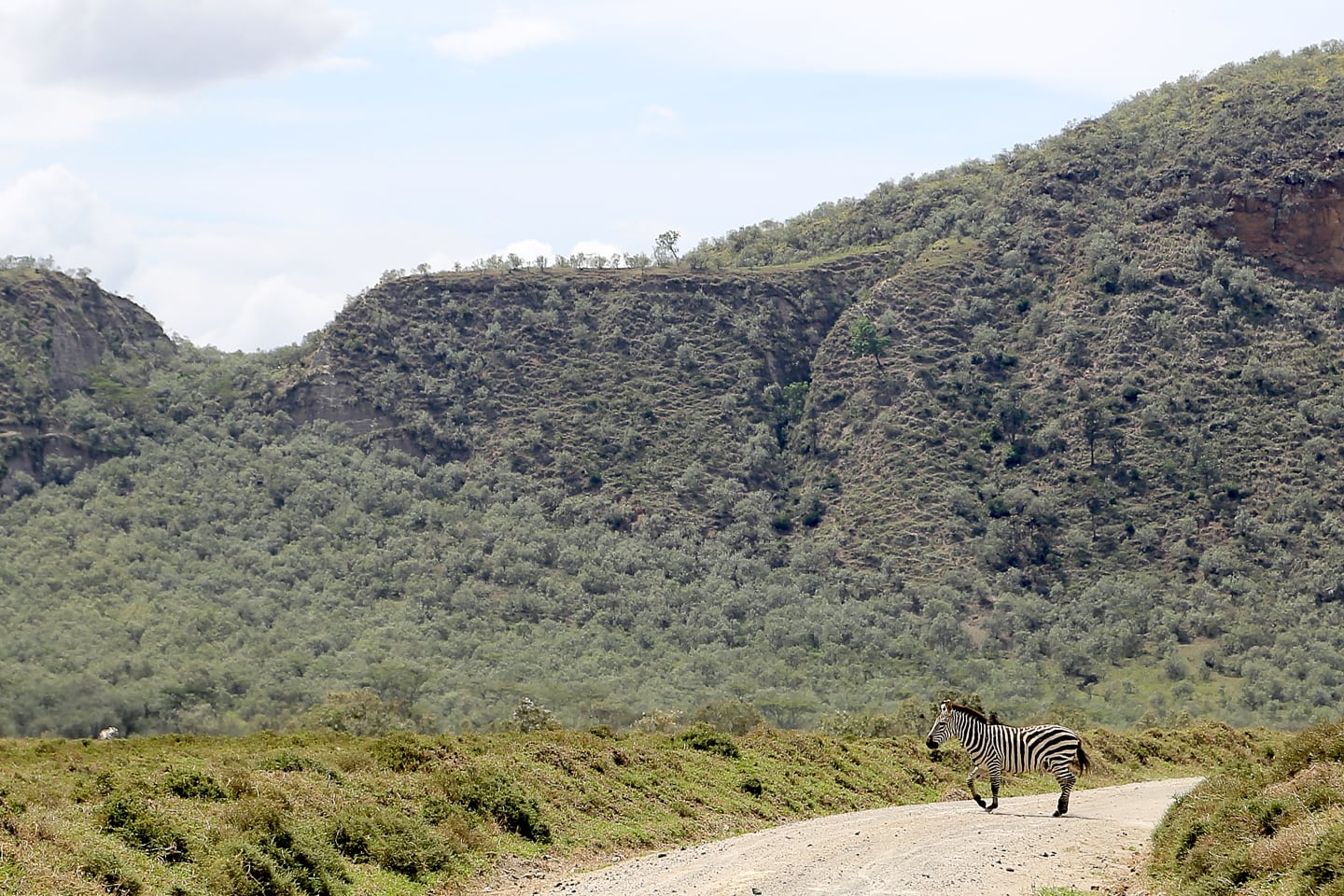
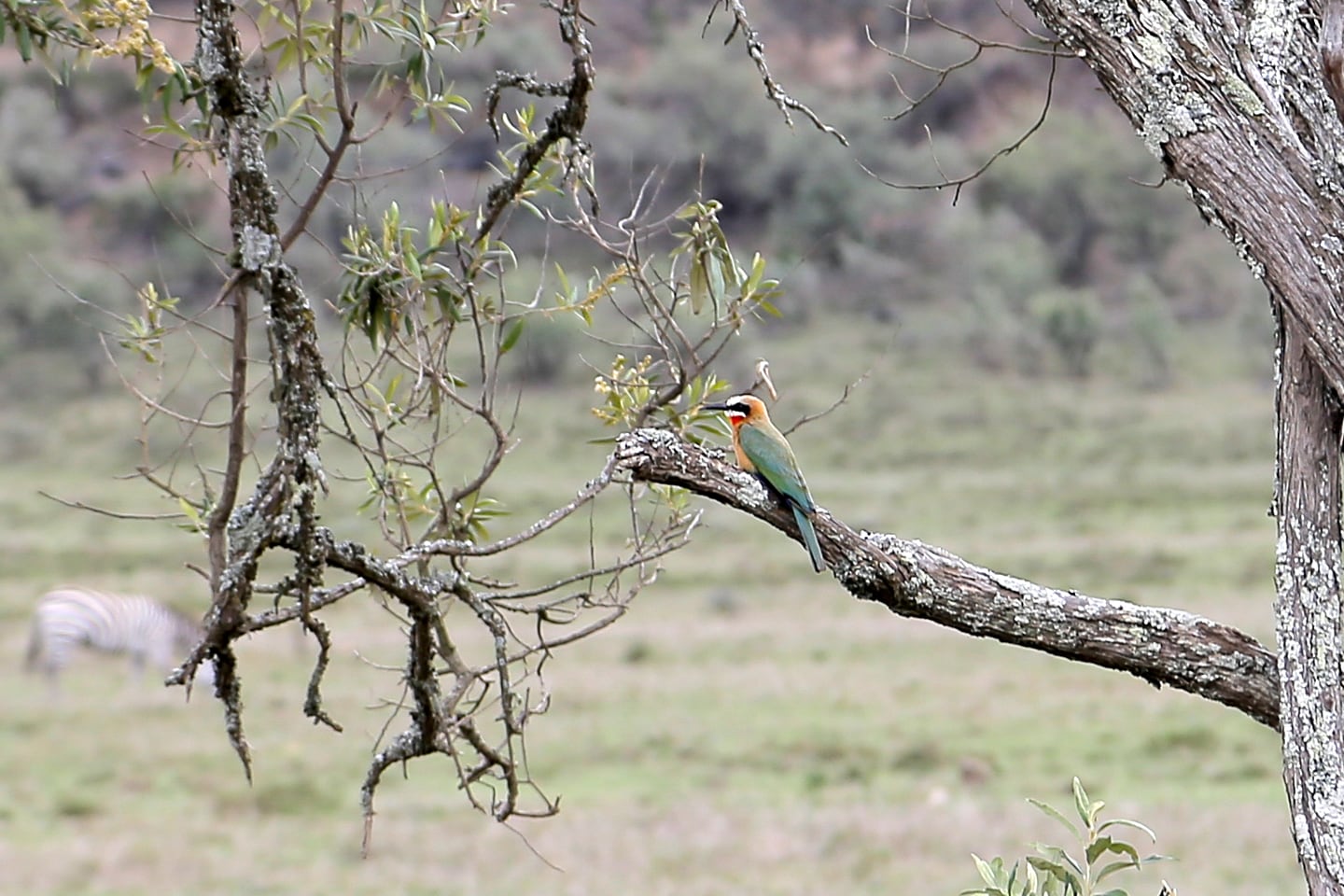
There also happen to be over a hundred species of birds in the park, but we found you really have to have a good eye and a lot of patience to catch a glimpse of more than a few.
Fortunately, Lori had sharpened her skills in Naivasha and was at the top of her game.
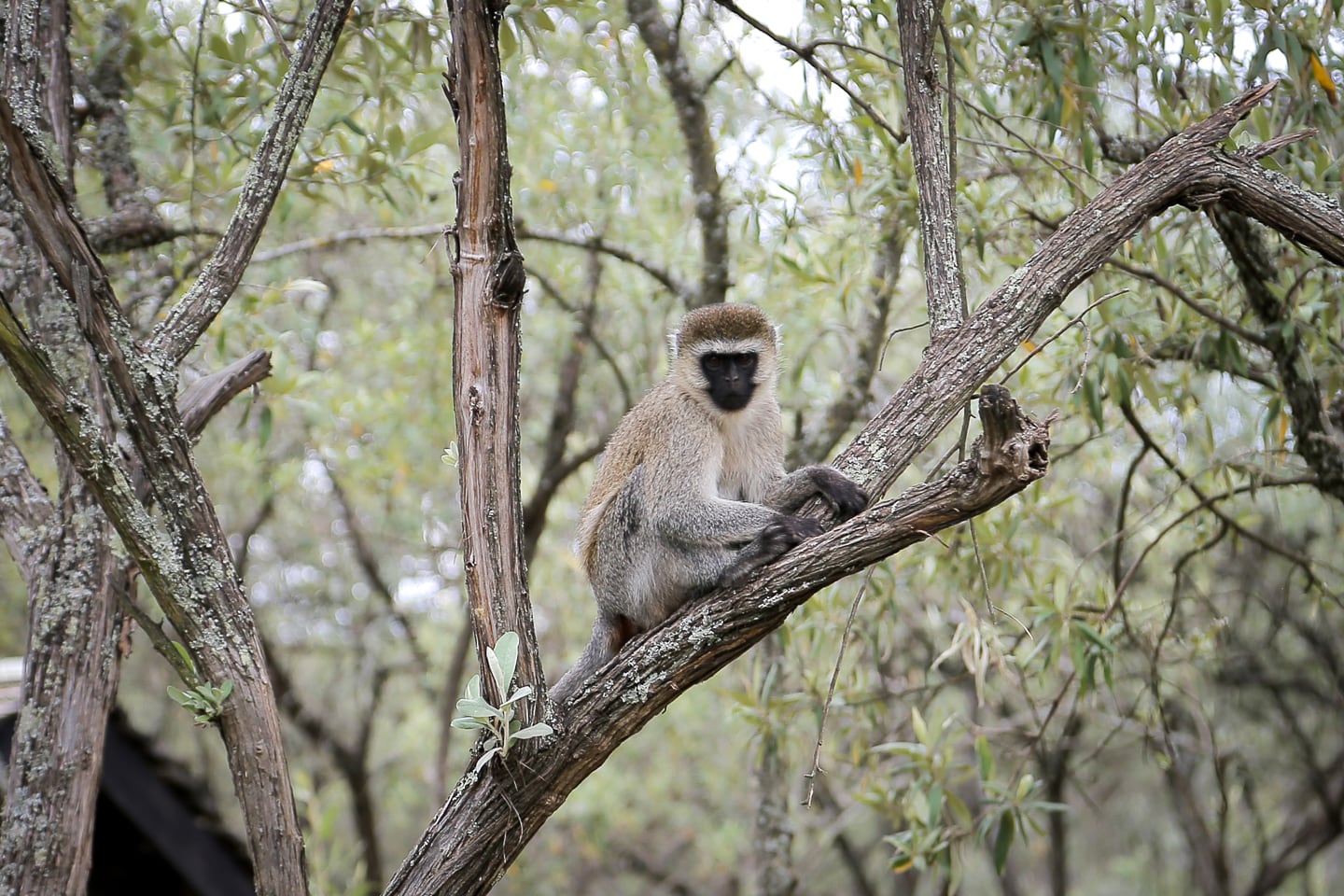
And then there were the baboons.
When we arrived at the picnic site and entrance to the Ol Njorowa (Lower) Gorge, it began to rain.
We checked in with the park guides to see when the next guided tour of the gorge was happening and we agreed upon 30 minutes…just enough time to eat our sack lunch and get harassed by the many resident baboons of the area.
For those of you who are familiar with these guys, sharing space with hungry, brazen and irritable baboons (when are they not!?) is never an enjoyable experience.
If any of you out there ever invented a baboon repellent lotion, I’d be one of your biggest fans.
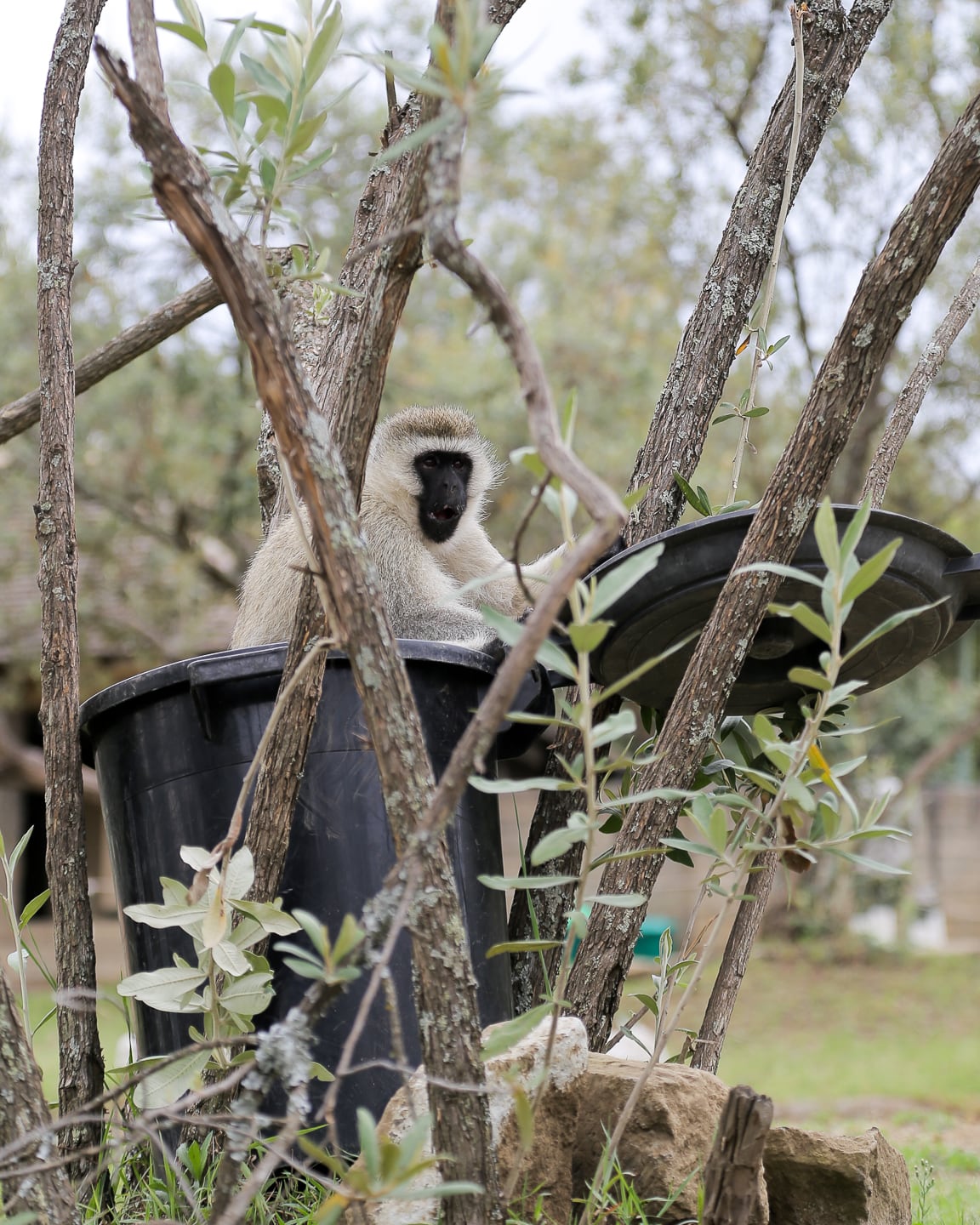
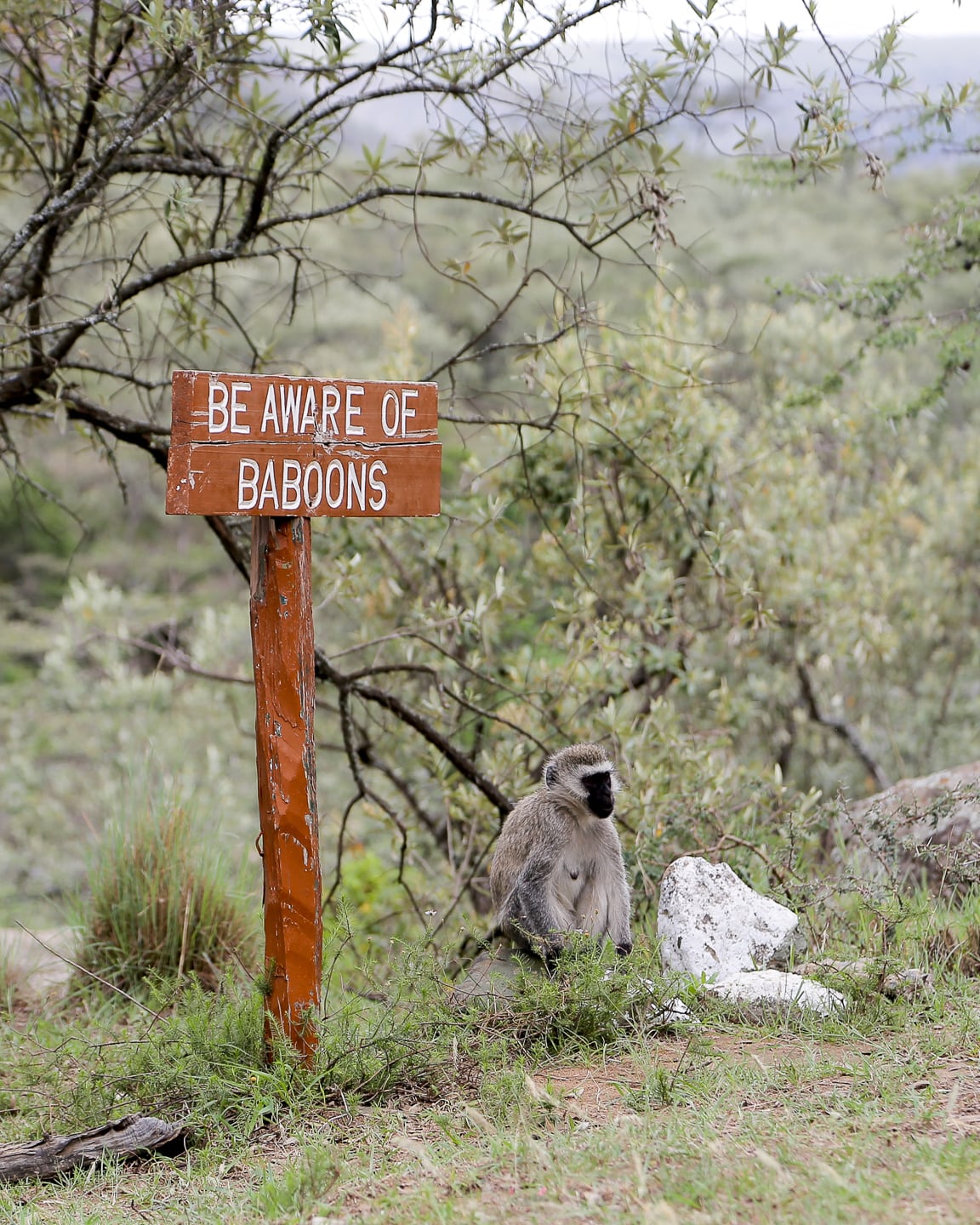
“BE AWARE” OF THE BABOONS.
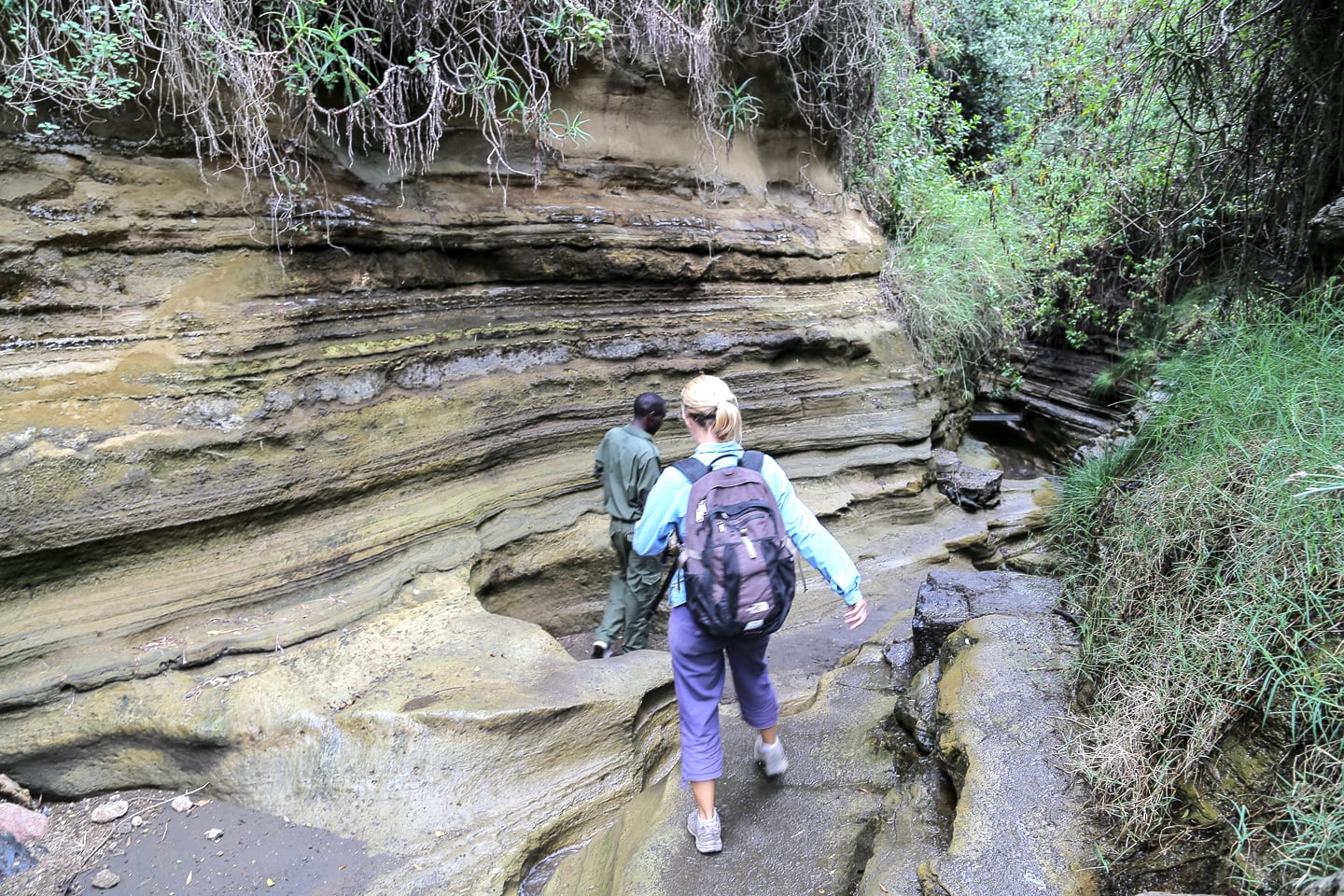
Descent into Hell’s Gate Gorge
After a quick lunch fending off baboons in a small rain shelter, we parked our bikes in a covered area near the Ranger station and followed our National Park guide into the depths of HELL (a.k.a. Ol Njorowa or the Lower Gorge).
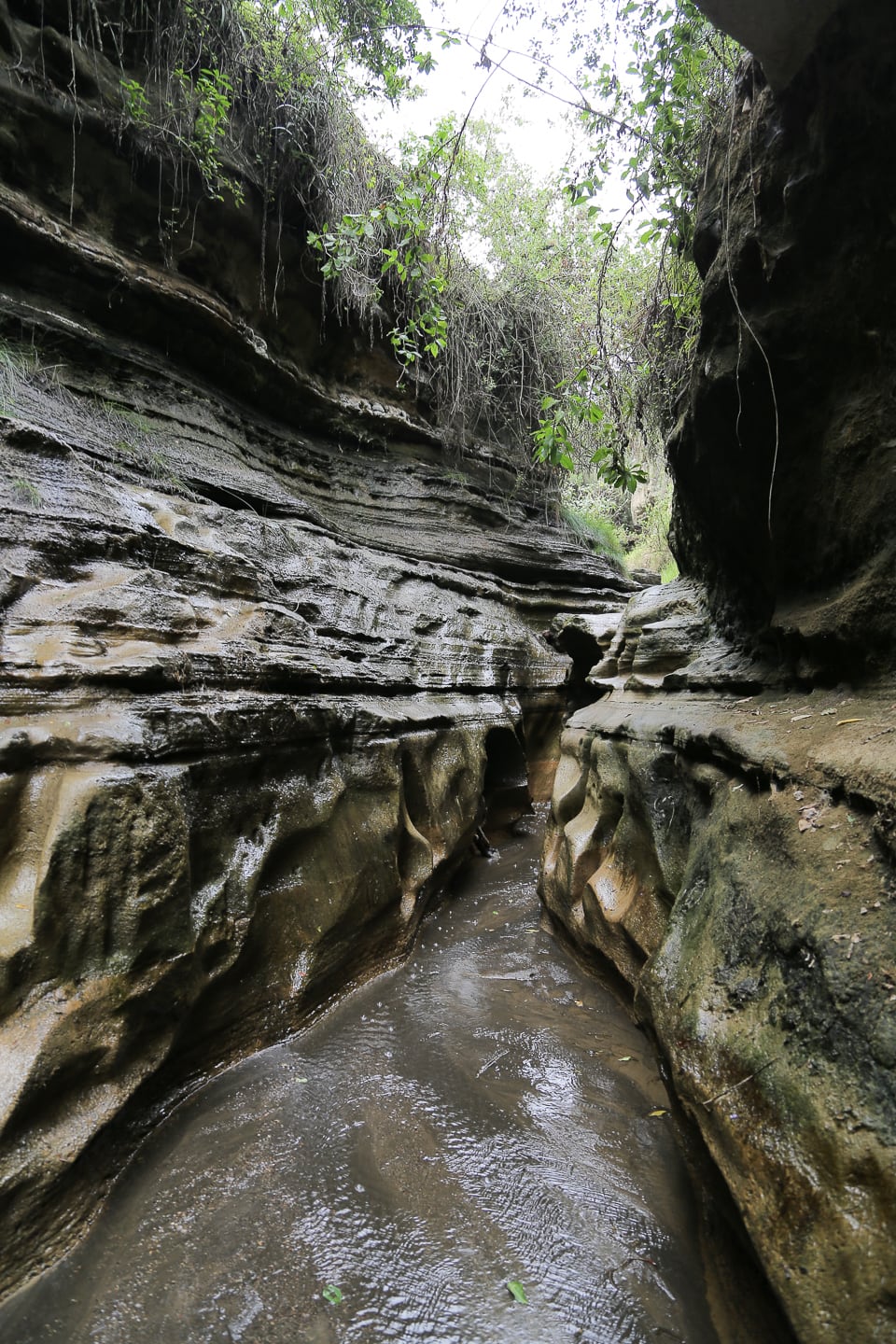
Like Goldilocks, the guide presented us with three options: the short trail, a medium-sized “long trail,” and the much longer “very long trail.”
Owing to the weather and time, we opted for the medium option, which turned out to be just right.
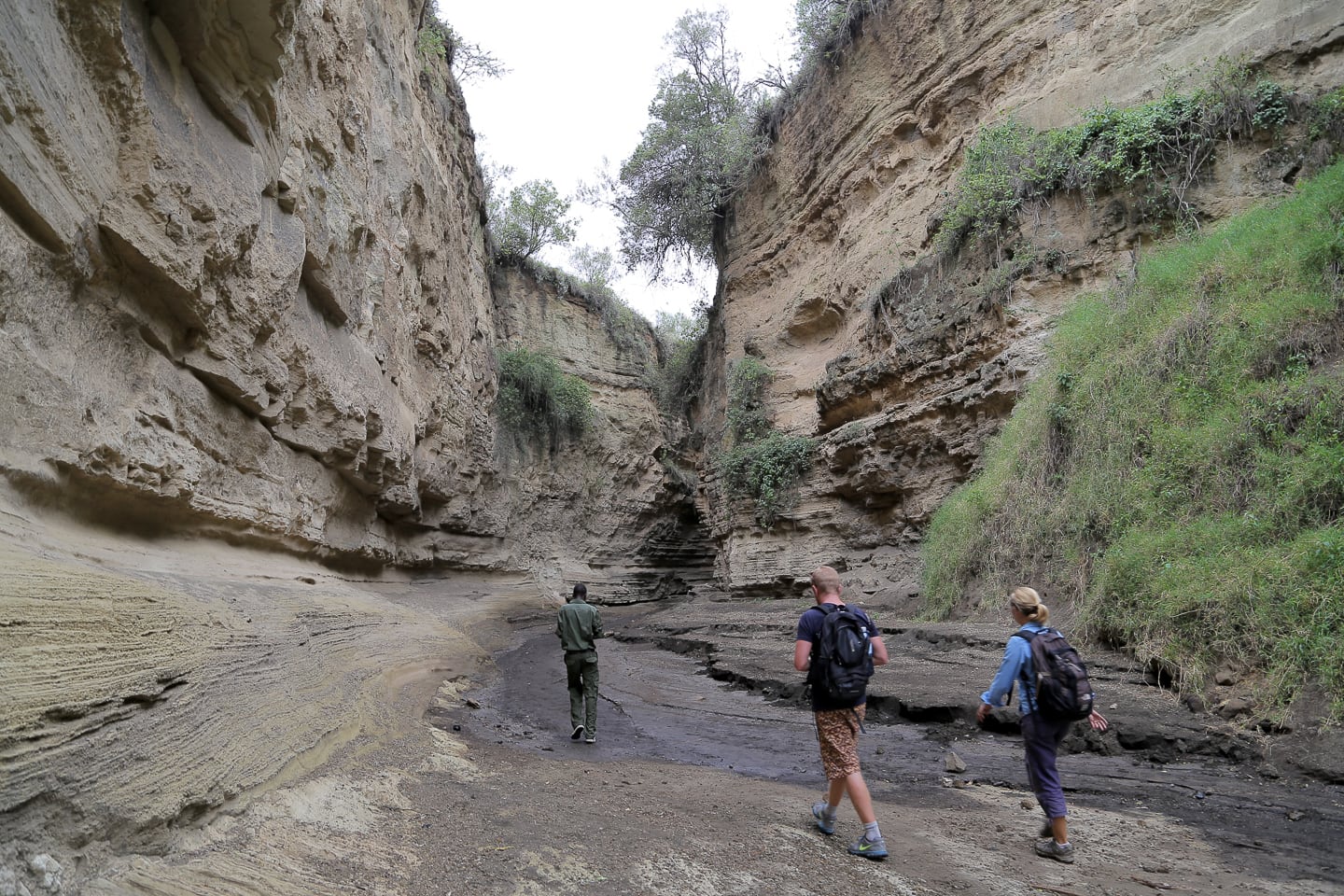
In November 2014, the cost to hire one of the very knowledgable Massai park guides was 2000Ksh (US$20), which we were able to divide amongst another visitor who was interested in going on the same hike.
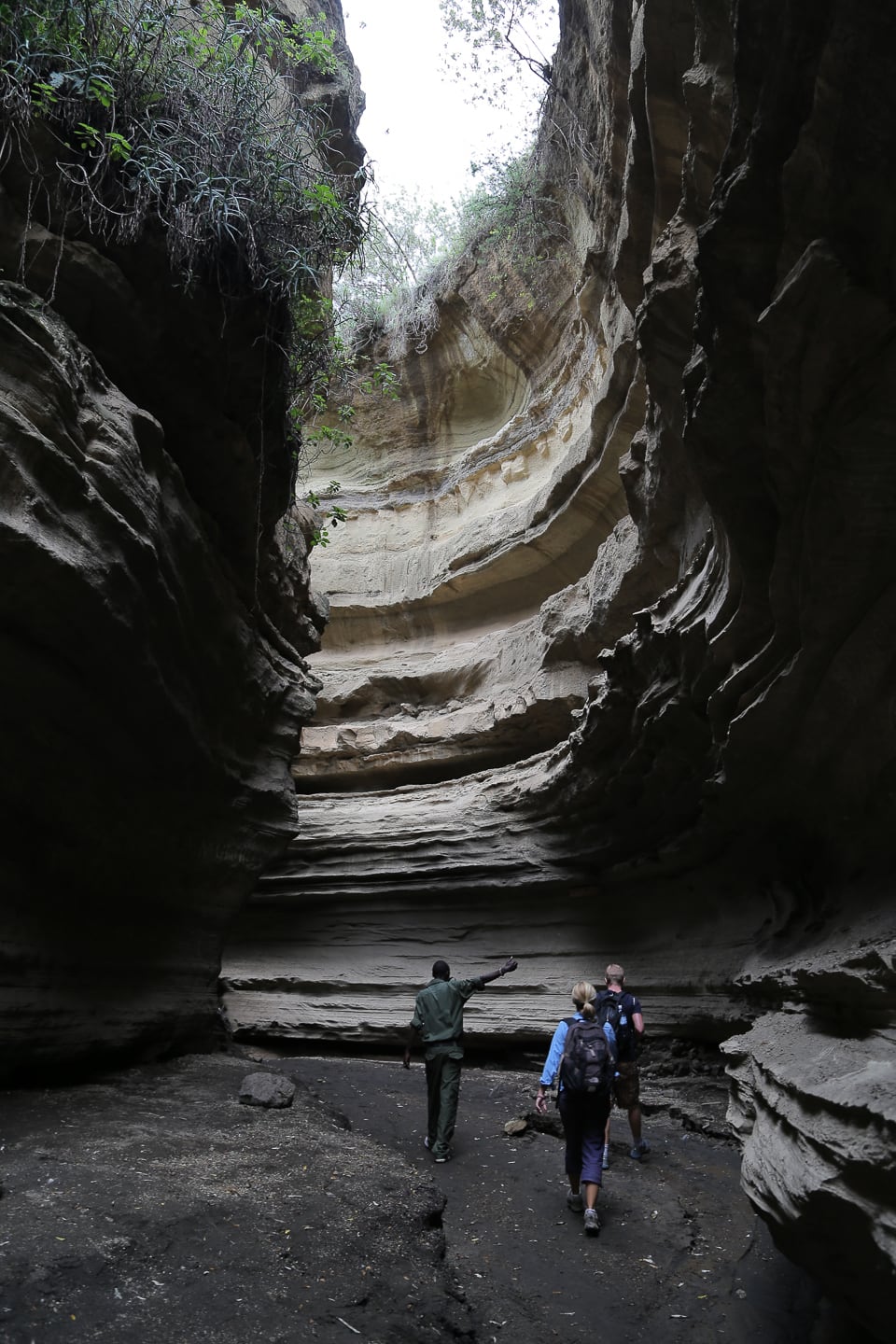
We had been told that the hike can be quite steep and difficult, especially in the rain.
It had rained fairly heavily during lunch, but even so we found the hike not to be very taxing at all. The rain kept the temperatures down, which made the walk very pleasant.
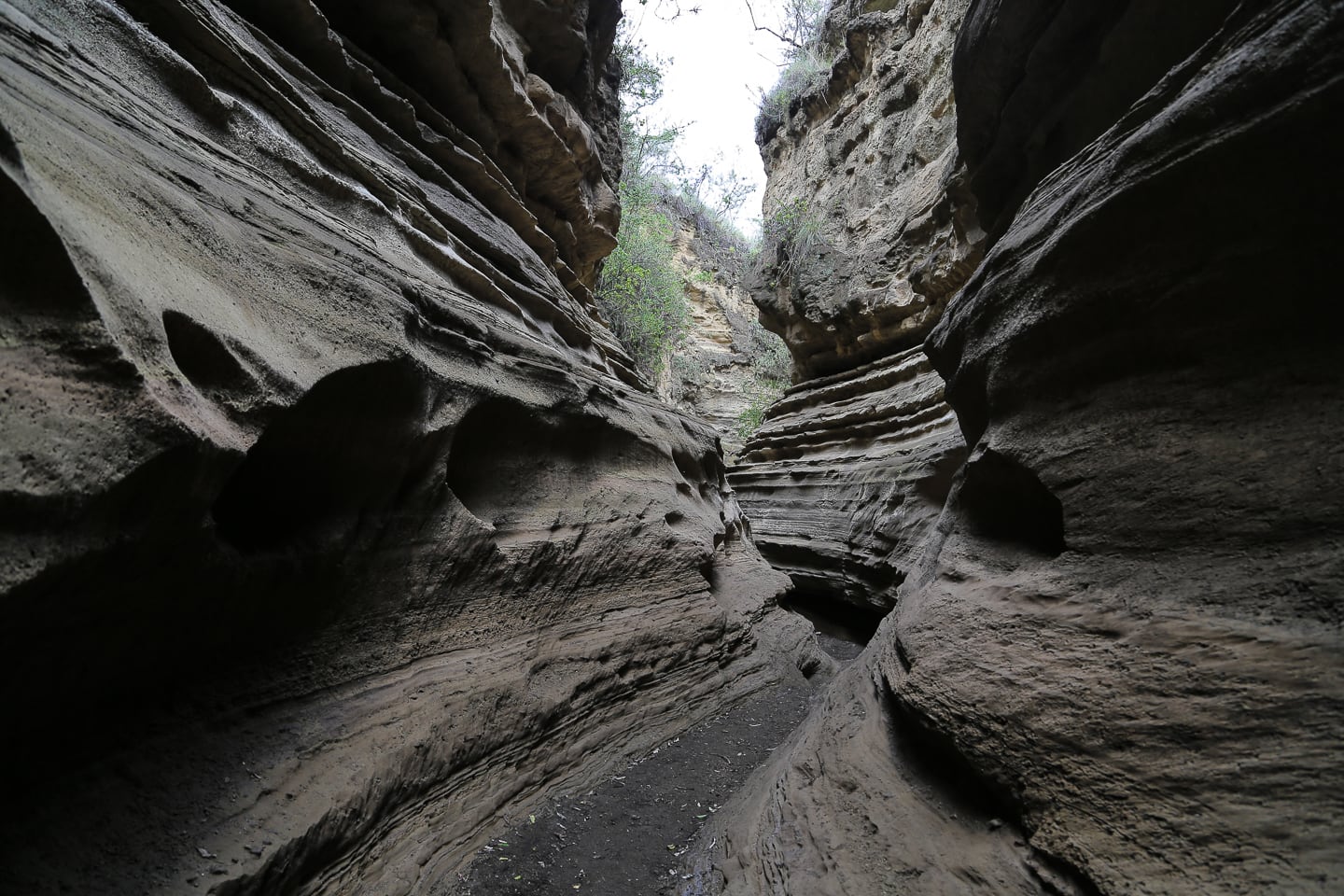
In the rainy season (November is the “short rainy” compared with April/May, which is the “heavy rainy”) there is always the danger of flash floods through the canyon.
As a result, we didn’t linger long in the depths of the canyon, and only continued on provided that the conditions remained dry.
If a heavy rain were to start, we’d have a very narrow window of opportunity to escape the canyon before the rushing waters.
It doesn’t happen often, but it does happen, and the huge logs jammed into various sections of the canyon (or suspended above) are testaments to that.
It remained dry, so we continued walking.
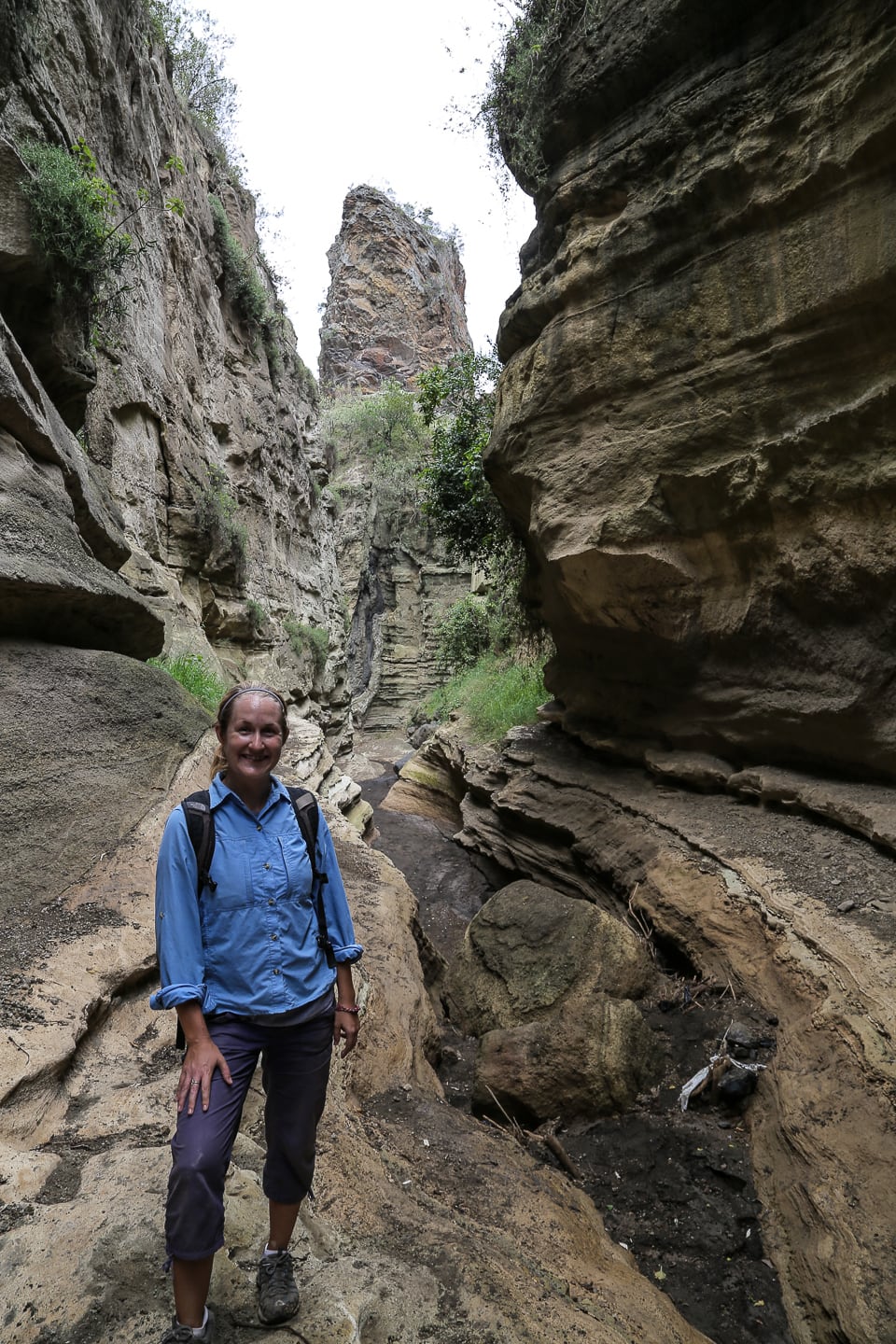
Hell’s Gate N.P. has long served as the inspiration and setting for literature and films.
Perhaps most notable, the Upper gorge inspired the landscape of Disney’s The Lion King, while the Lower Gorge served as the setting for a key scene in Tomb Raider: Cradle of Life.
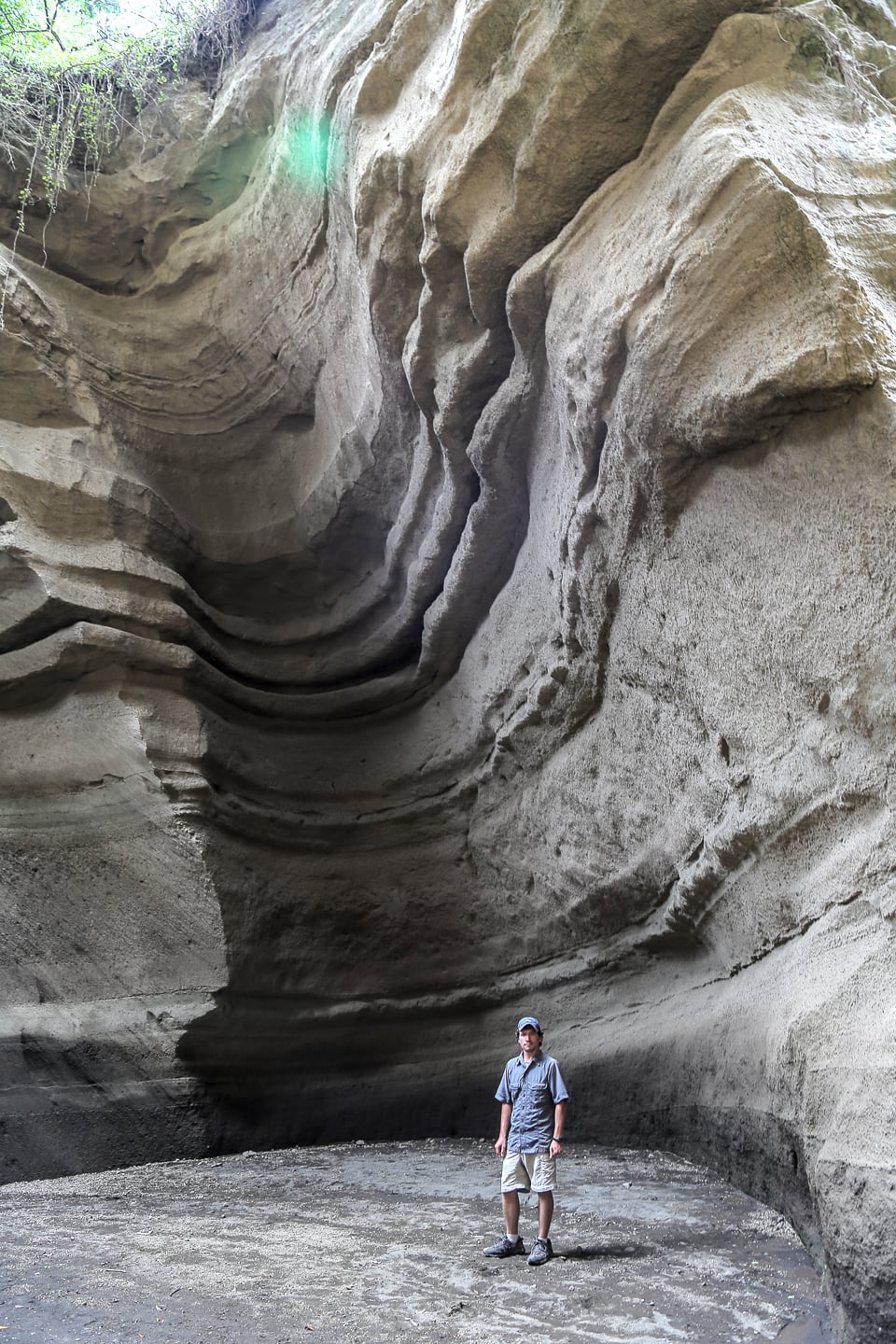
Apparently, I’m standing in the “Devil’s Bedroom,” which appears prominently in the movie. I wouldn’t know since I’ve never seen it, but the formation was pretty amazing nonetheless.
Our guide was quick to point out that the circular patterns in the “Bedroom” were carved from thousands of years of water rushing through here creating a whirlpool from which there is no escape.
On that sober note, we turned around and quickly made our way out of the gorge.
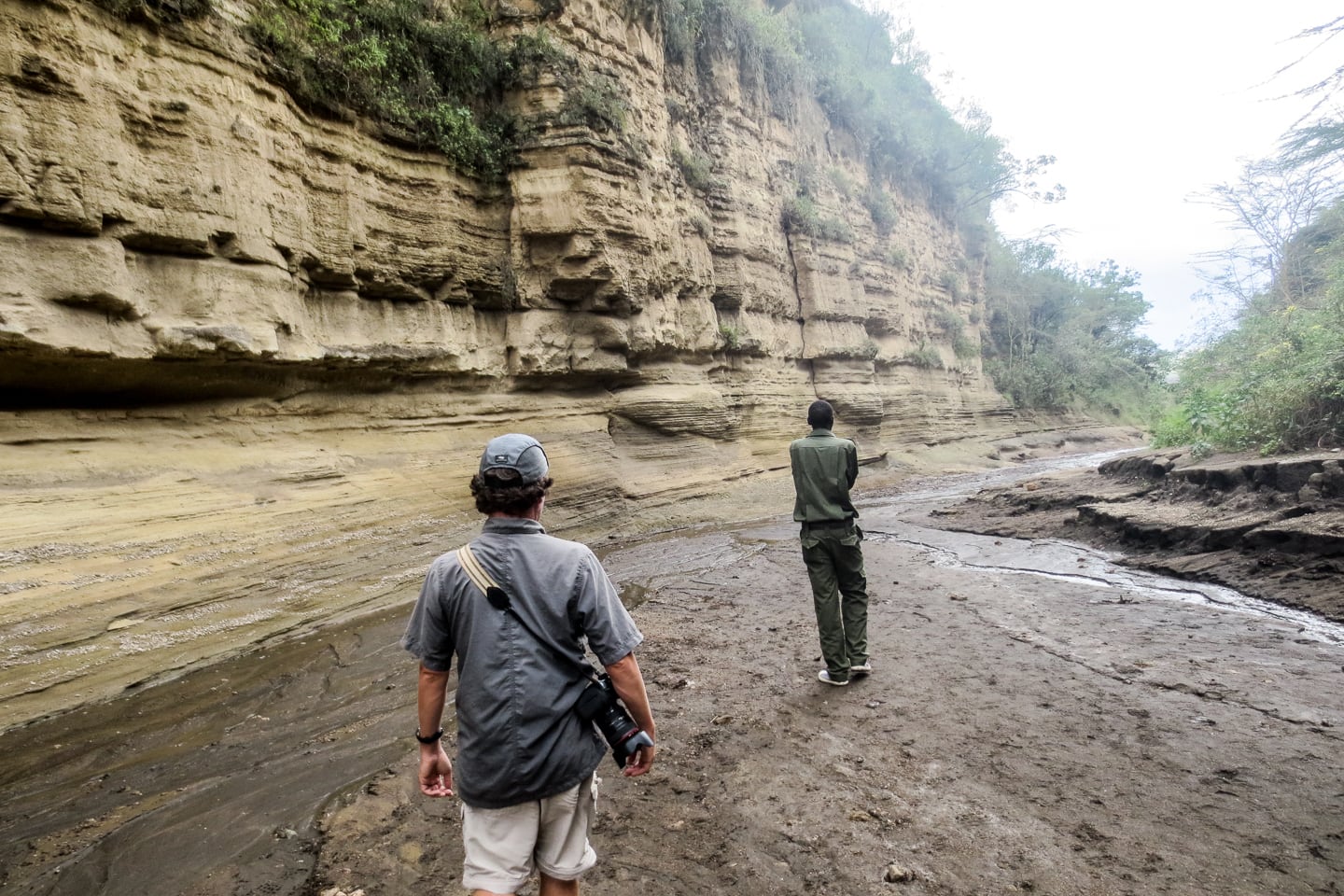
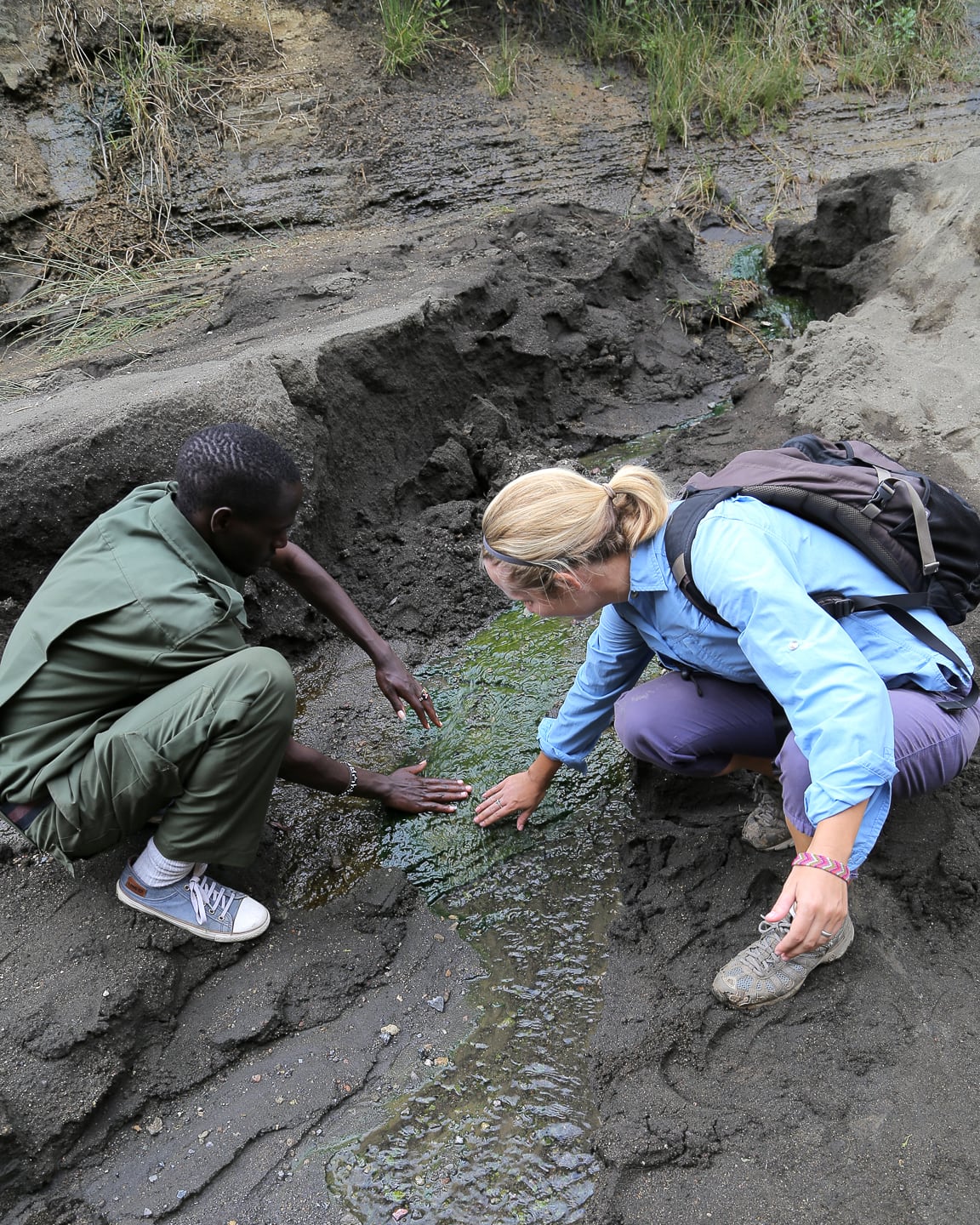
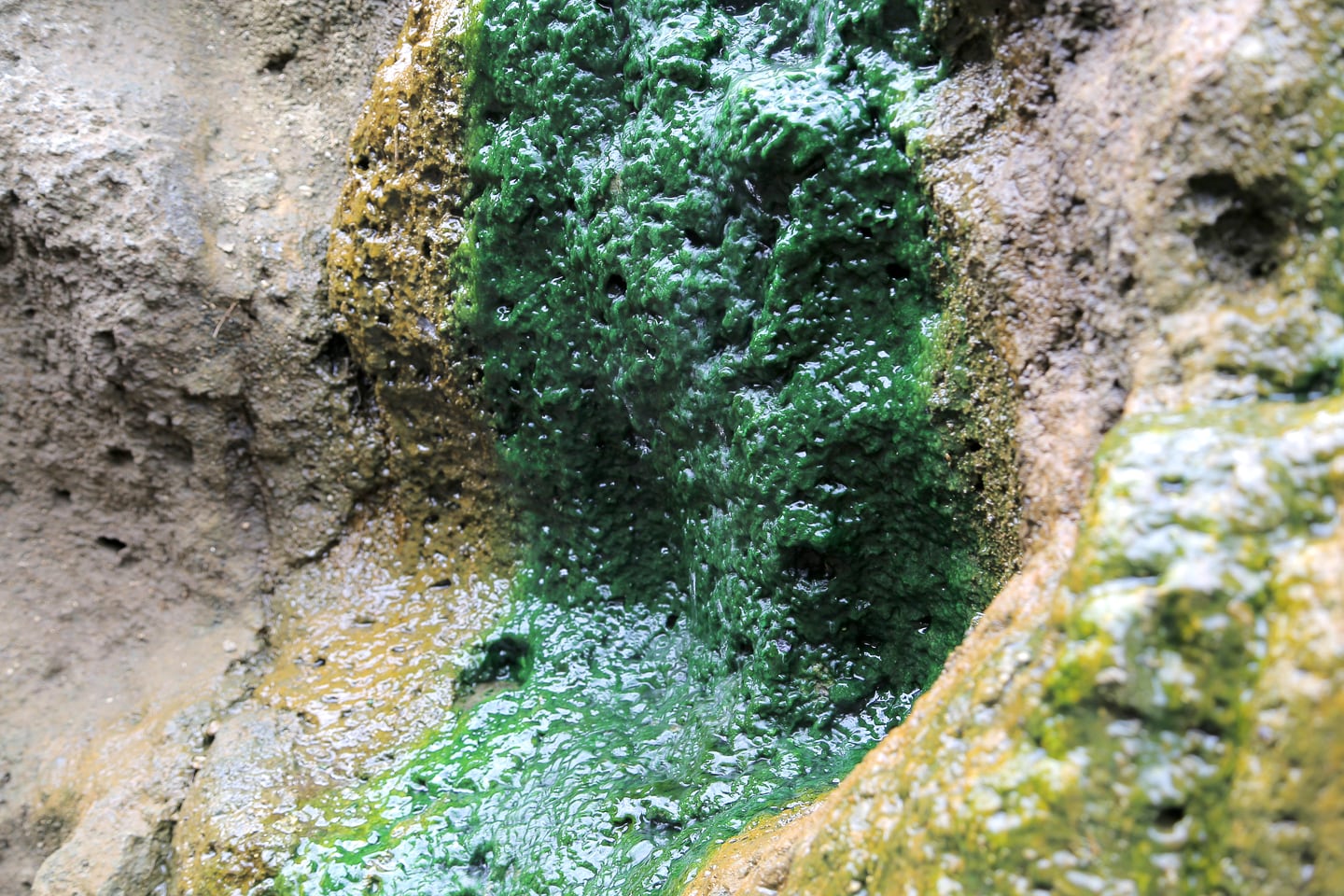

Earlier, I called Hell’s Gate one of Africa’s “most dramatic, and most endangered, landscapes.” By now, the dramatic part of that is probably pretty evident, but the endangered part might not be.
Hell’s Gate is home to a diversity of wild animals and a particularly stunning portion of the Rift Valley, but it is also sitting upon one of the country’s most significant sources of geothermal activity.
To date, this valley has become host to three geothermal power stations producing a combined 280 megawatts of power, enough to provide electricity for 500,000 homes. Production is expected to be increased to 5,000 megawatts by 2030.
Such numbers make it easy to see why some Kenyans believe that the host of geothermal power under the Rift Valley is the answer to Kenya’s energy needs.
But unfortunately, most of the drilling areas are in Kenya’s National Parks.
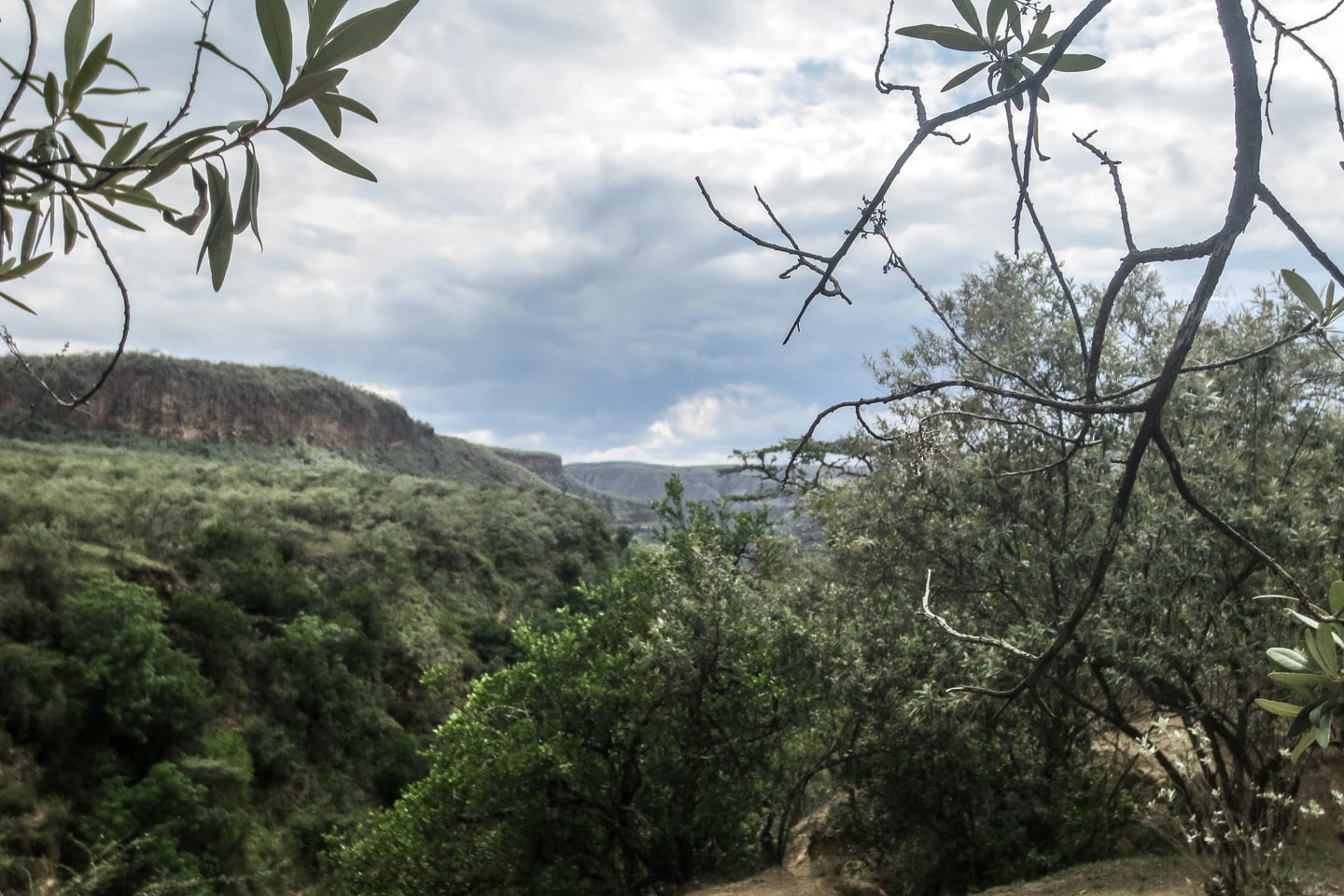
But geothermal energy is “green” energy, right? It relies on the earth’s own energy and does not produce harmful pollutants like carbon dioxide, right?
Well, yes and no.
The problem with these plants aren’t the extraction process, necessarily, but their location and the amount of heavy infrastructure needed to make efficient use of the energy.
Roads, heavy machinery and other industrial infrastructure are rarely compatible with wildlife habitat, especially with regards to birds.
The National Park is known for its variety of birds species, particularly its raptors who thrive in cliff habitats. Since the completion of the plants and heavy infrastructure, the park has seen a number of significant losses, including Lammergier, white-backed vulture, and others.
These days, some are even calling Hell’s Gate more of an industrial area than a national park.
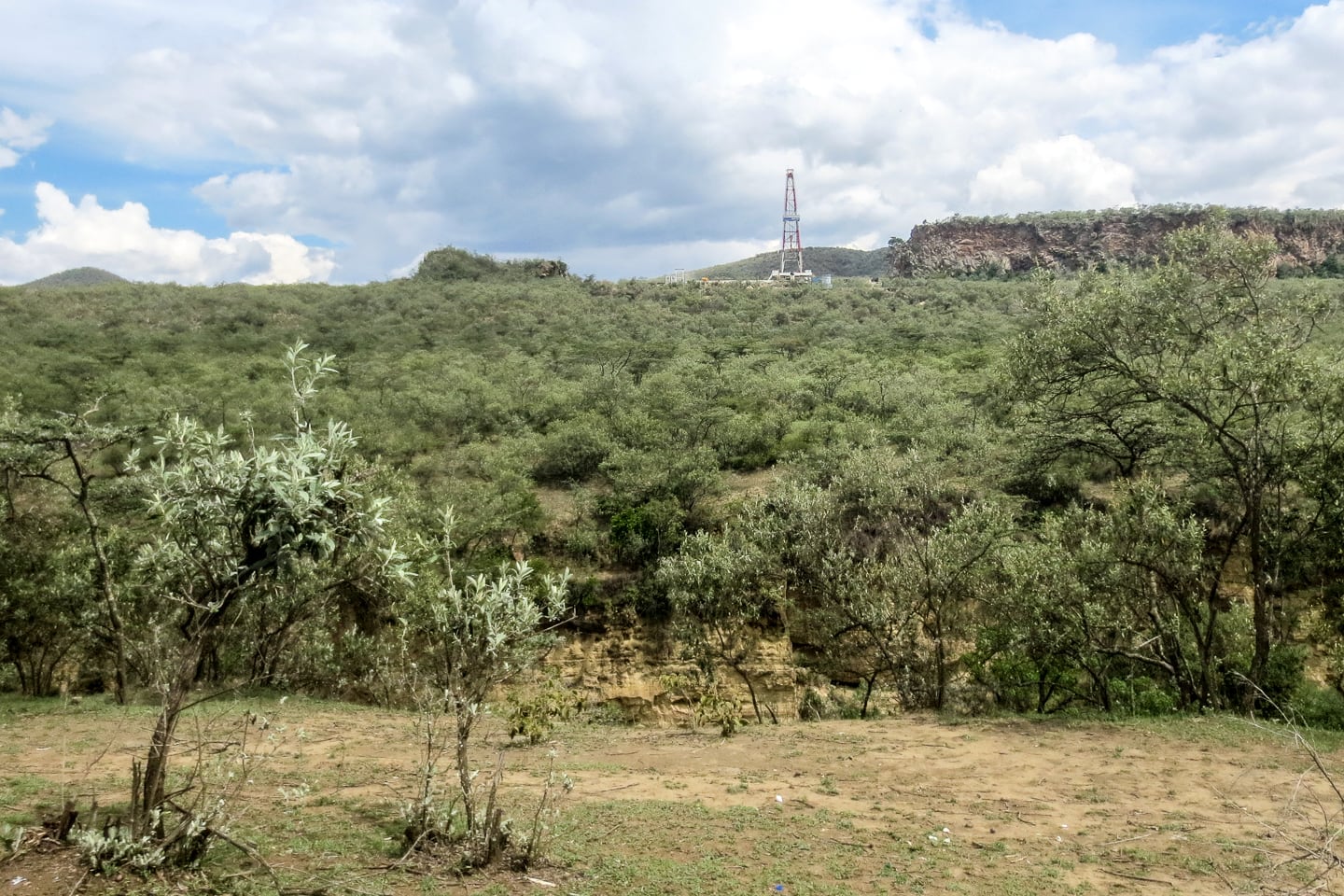
As we approached the end of our hike, the deep rumbling of industrial vehicles and the swoosh of escaping air and gas cut through the tranquility of the park.
Perhaps not coincidentally, our Massai guide ended the trek high up on a hill affording a commanding view of the park, the awe-inspiring Rift Valley splayed out before us, and, in the middle of it all, the towering geothermal drill (above), laboring away.
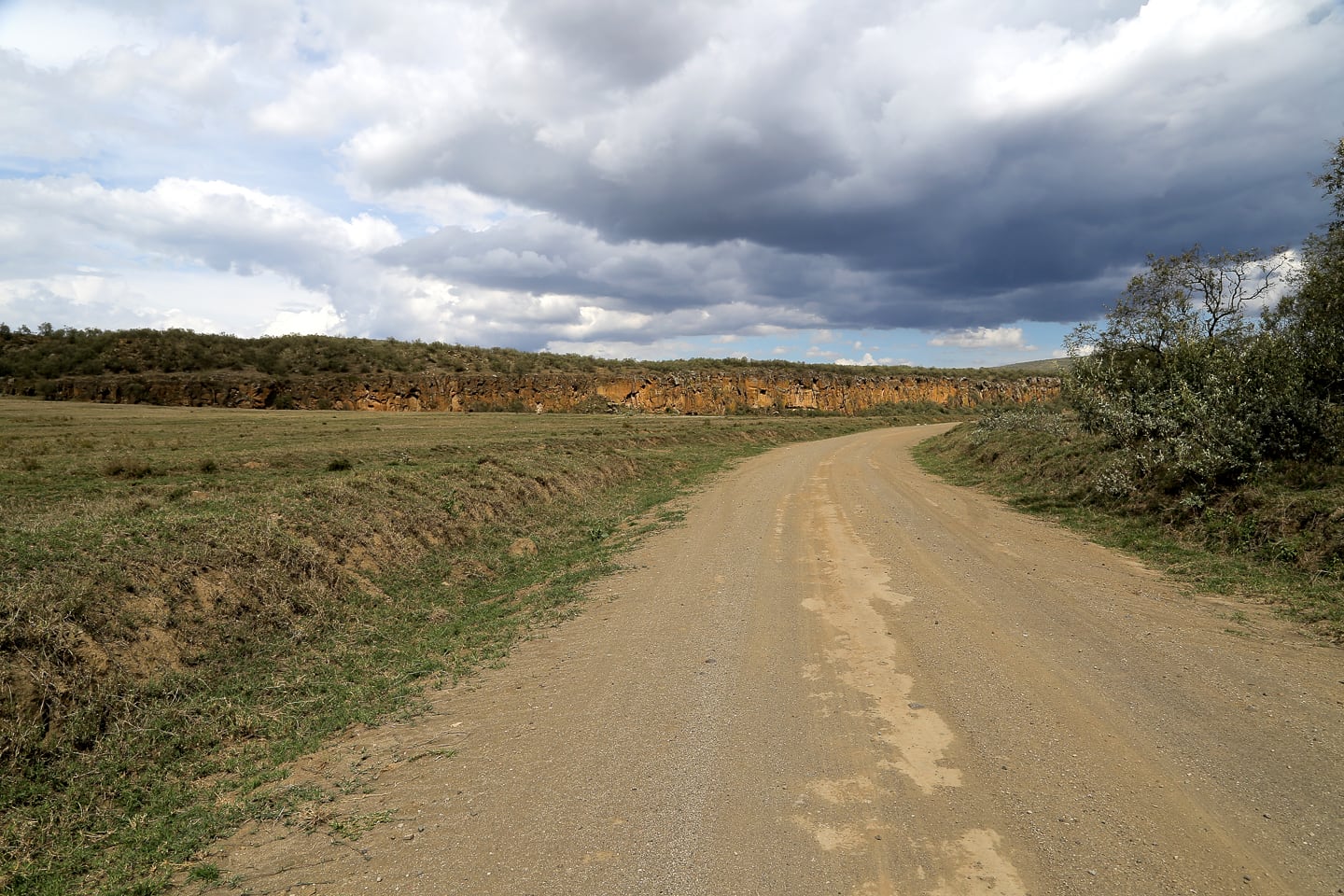
Perhaps it wouldn’t be such a big deal if the power plants were somewhere else far away from a protected wildlife refuge — out of sight, out of mind.
But it is no coincidence that Kenya’s most stunning and diverse places also sit upon vast reserves of energy, as the very same forces responsible for the energy are what initially helped shape the spectacular landscape and provide habitat to a diversity of species.
And Kenya, like so many nations across the world, is struggling to find cleaner ways to meet the increasing energy needs of a growing and increasingly prosperous population.
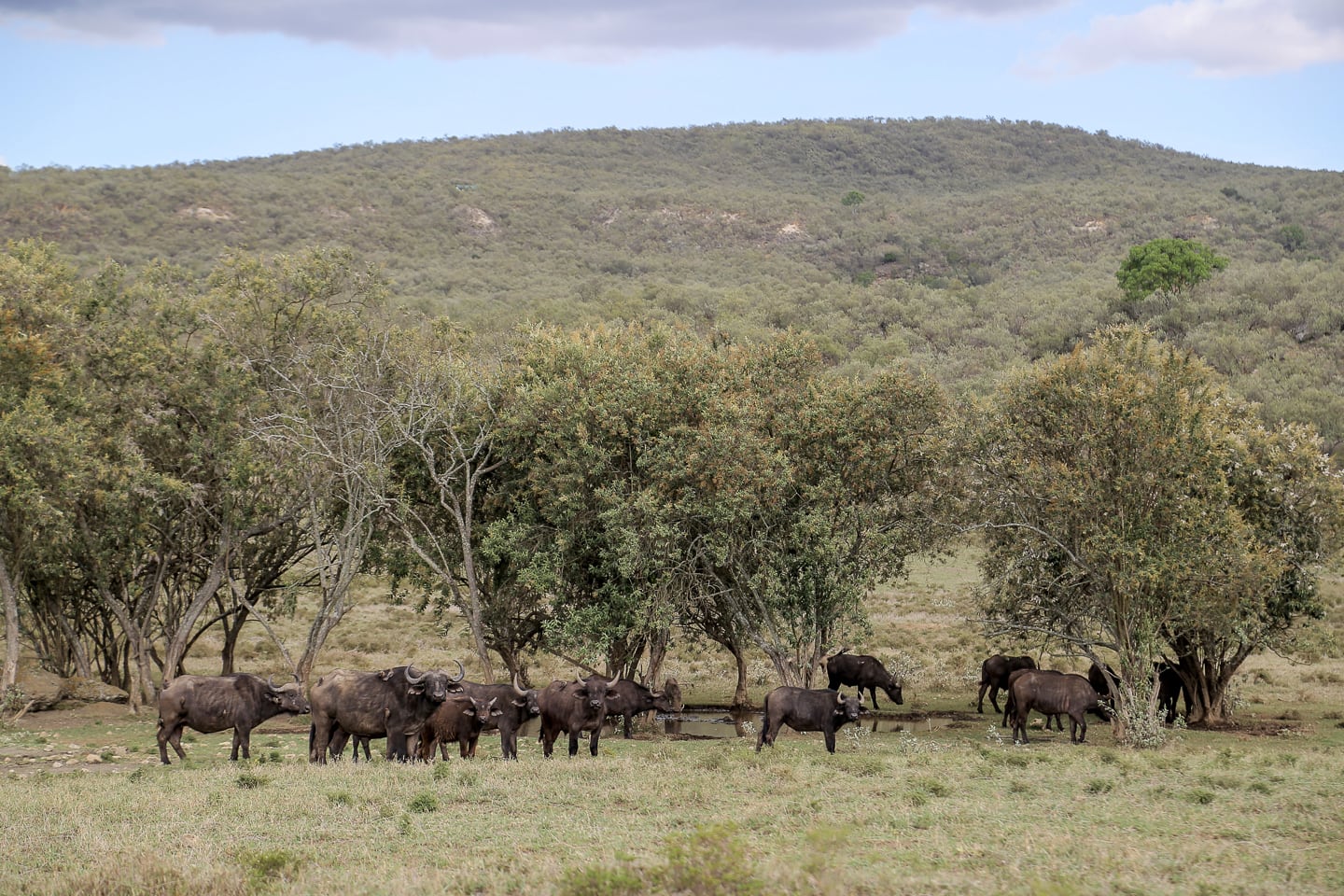
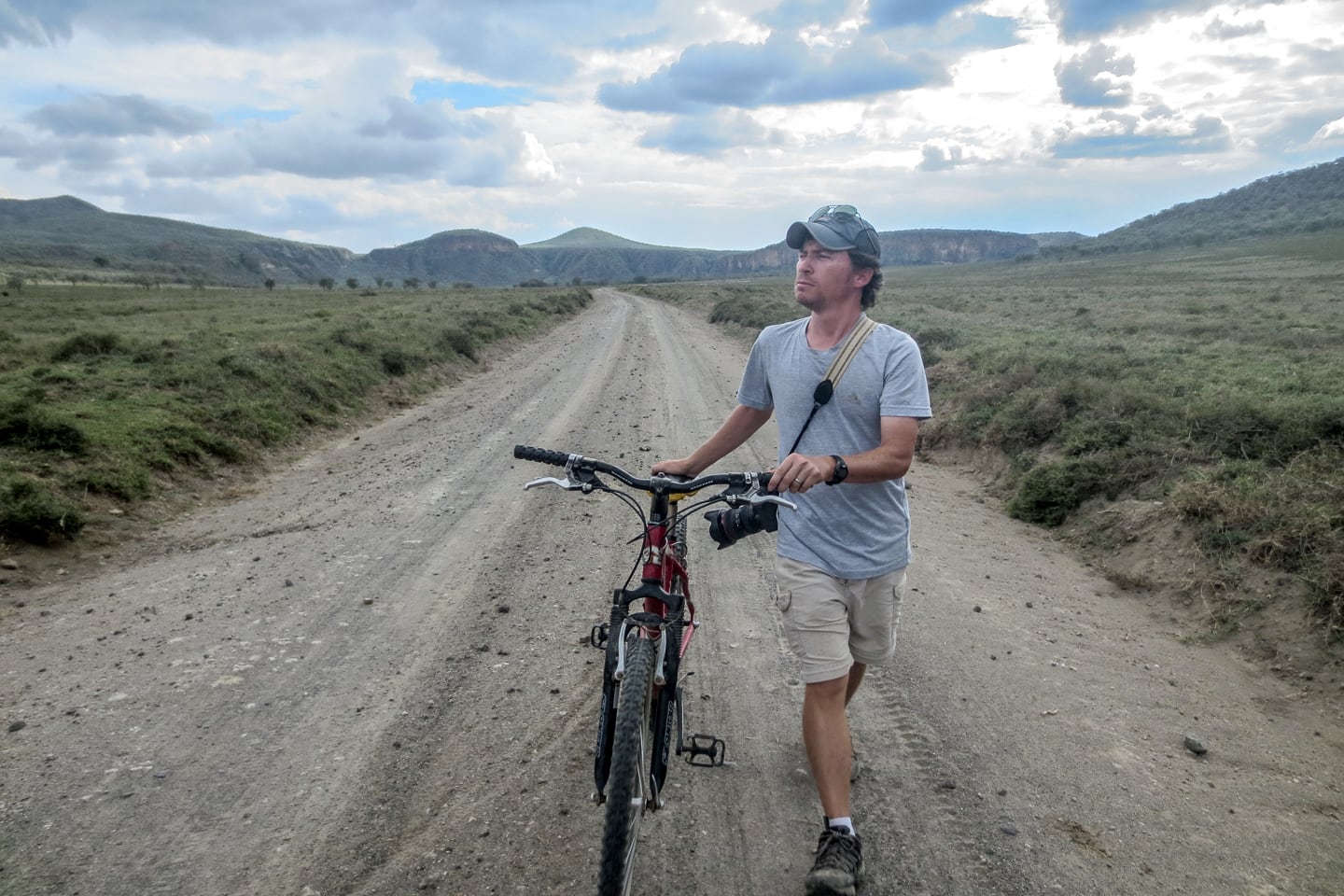
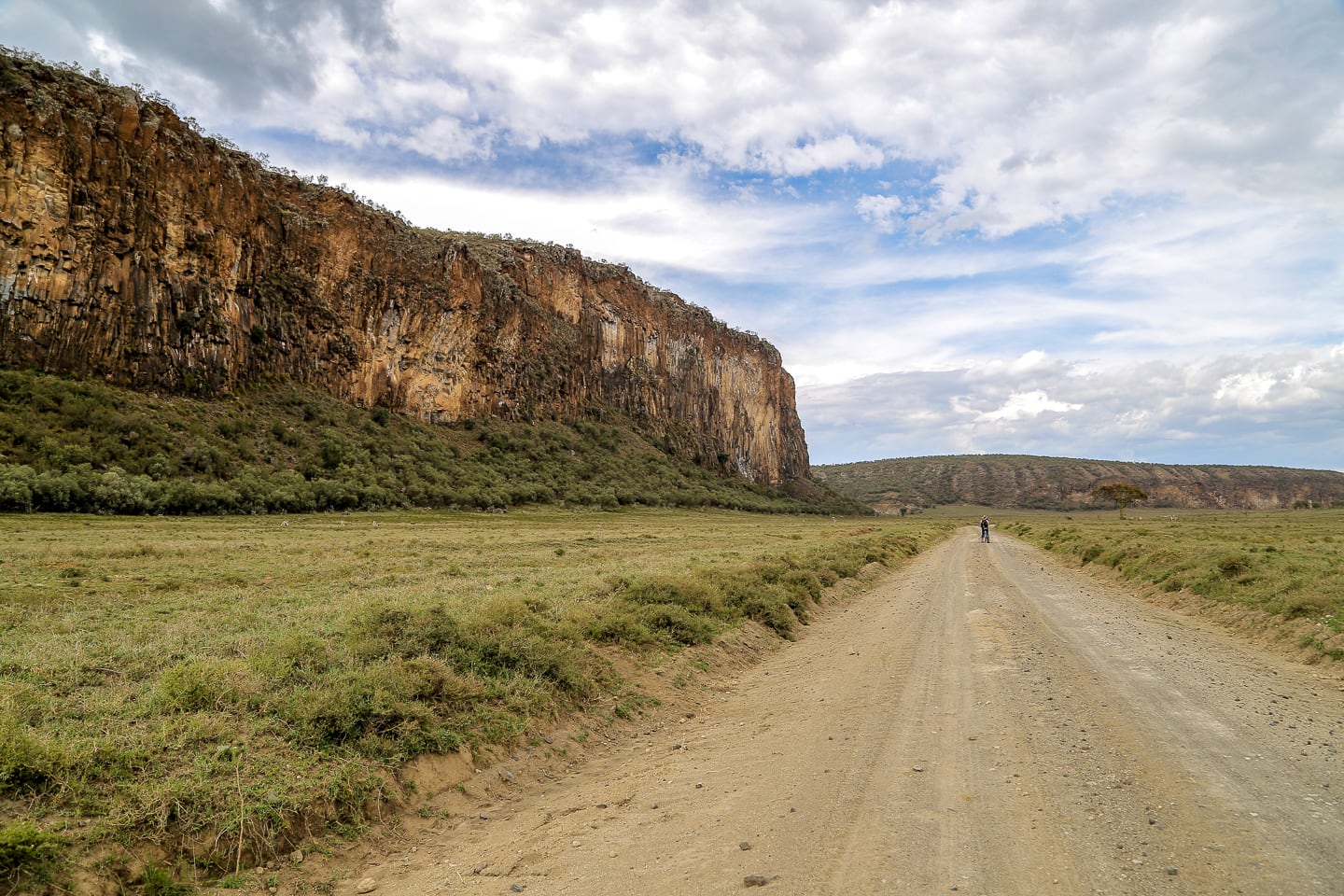
All in all, our day biking through Hell’s Gate National Park was a pretty amazing experience.
Most of the time there wasn’t another person in sight. At times it felt like we had this stunning place with all its inhabitants all to ourselves.
Often, we would pull up even with a gazelle or zebra in the distance and watch them graze, or listen to the silence.
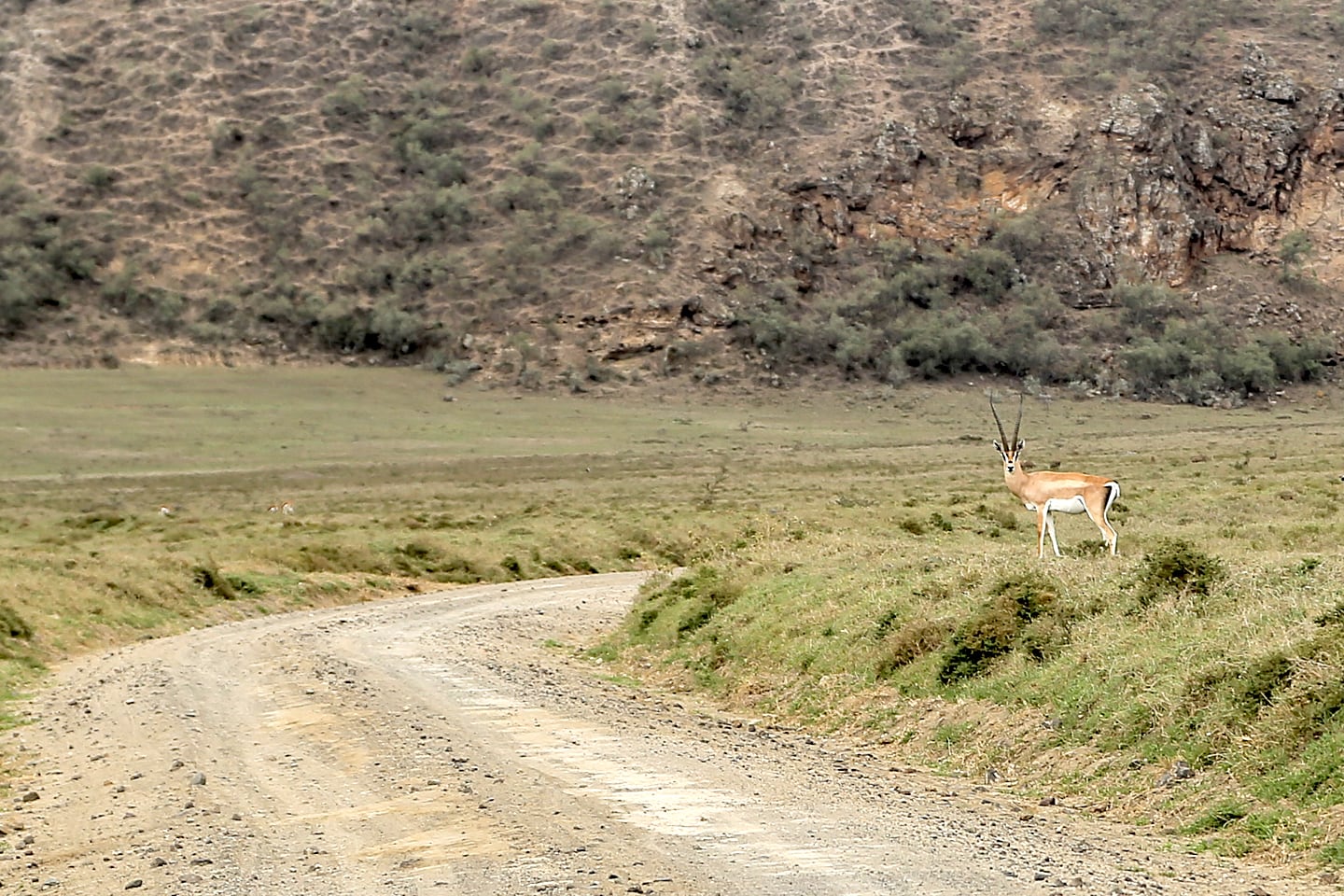
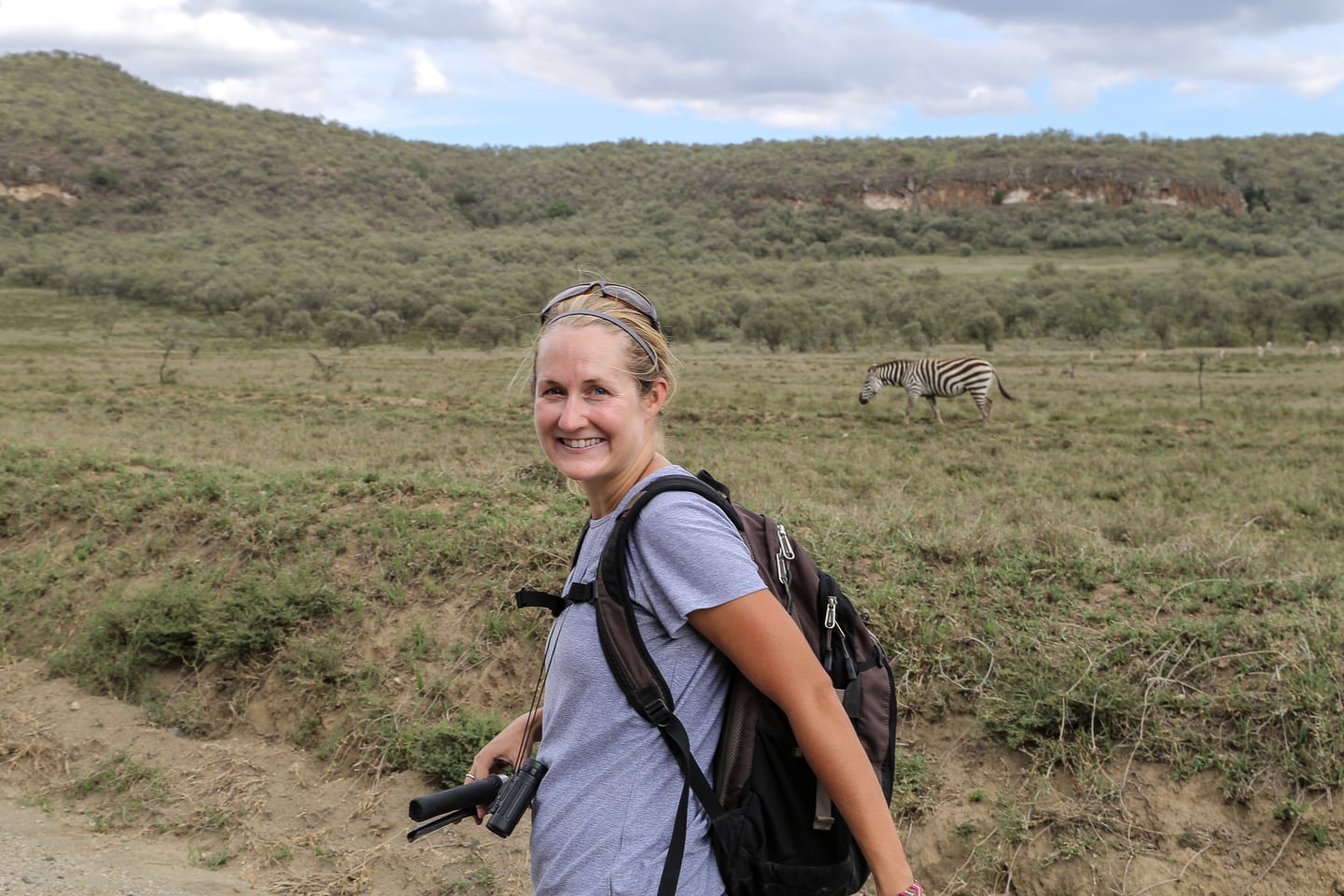
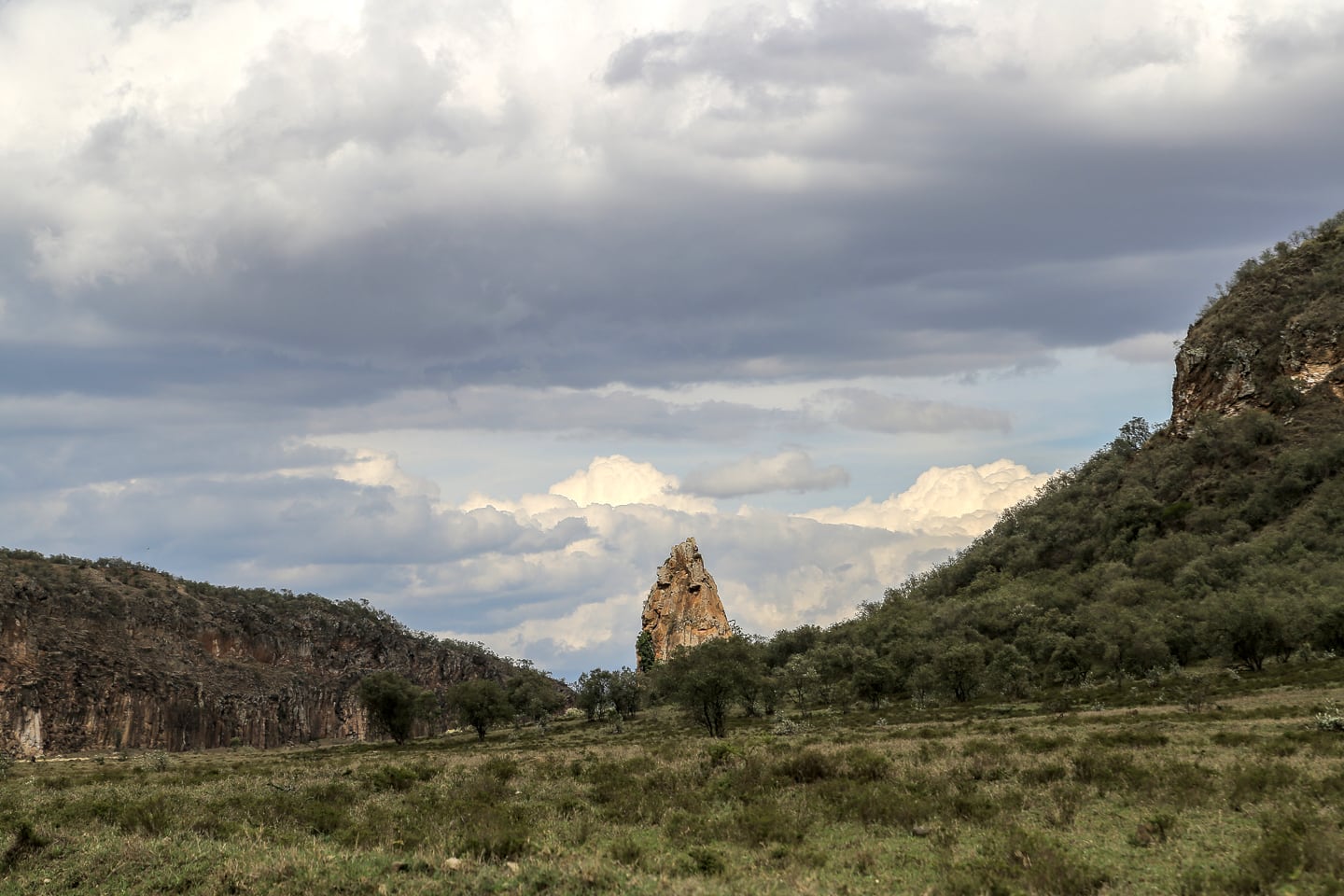
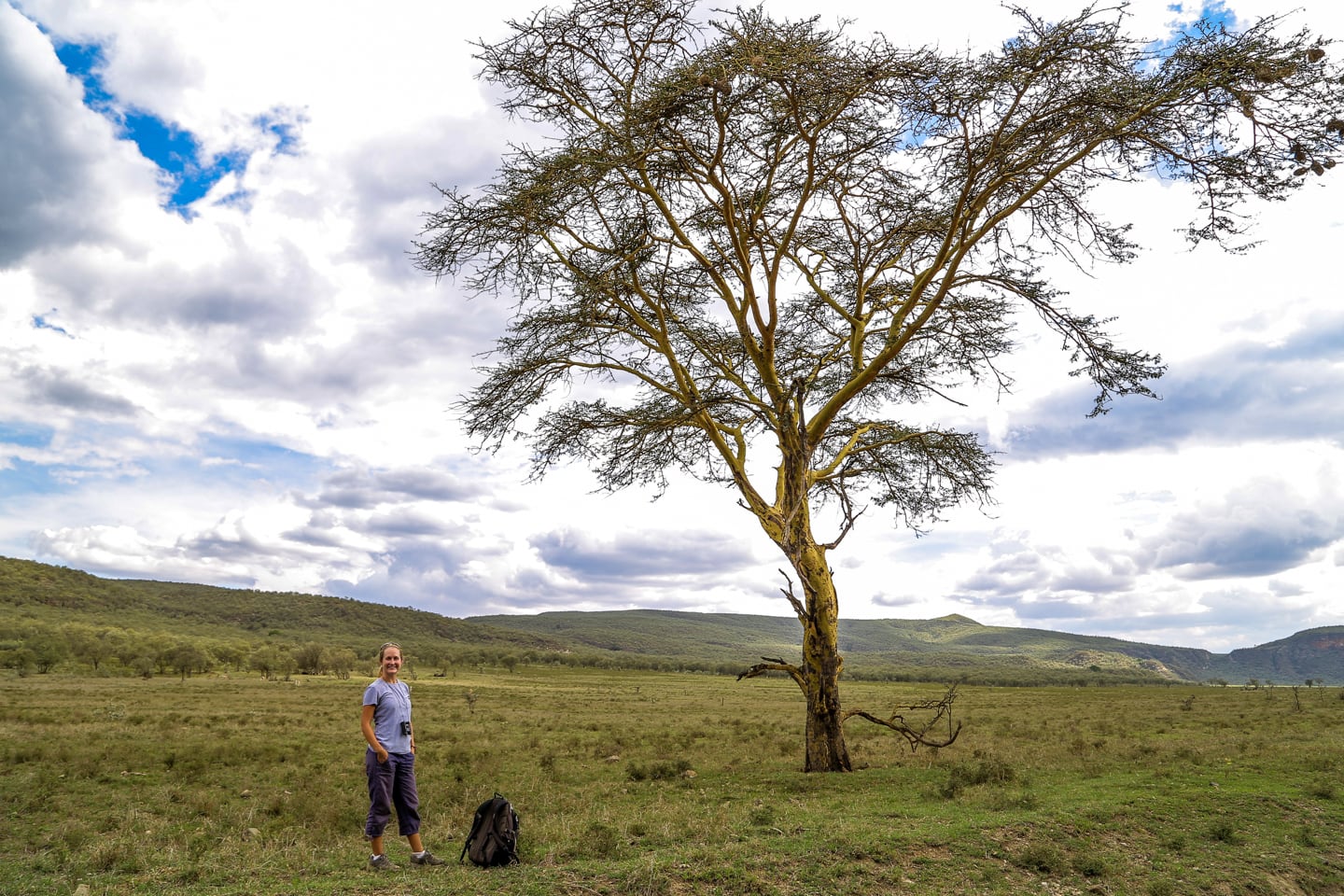
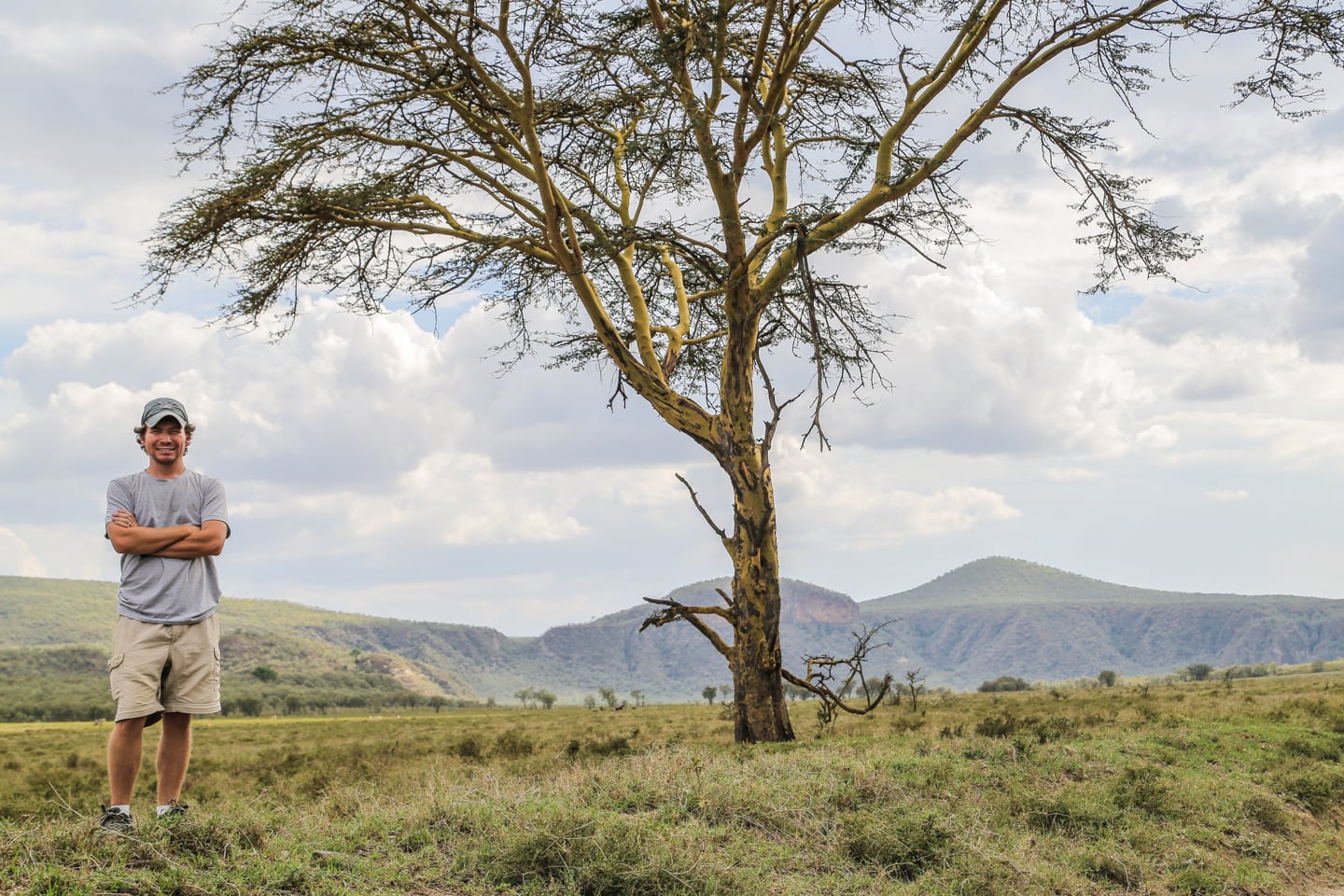
When we returned from our biking safari, we took advantage of the charcoal-powered hot shower huts (heated only a few hours a day), changed into clean clothes and took a short walk to visit the hippos.
It also happened to be Thanksgiving back in the U.S., and we marked the occasion by splurging on a gourmet hamburger, Greek salad with feta and avocados (both we split), and wine — all of which we’ve only tasted a handful of times in the past 18 months.
Lori and I reflected on a memorable day and gave thanks for all of the things we had to be thankful for this year — which indeed, are many.
